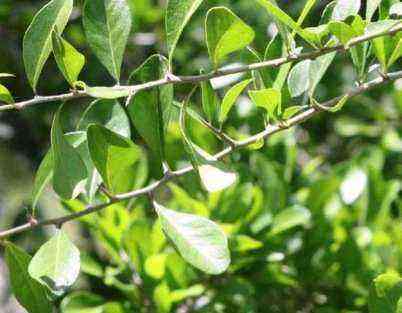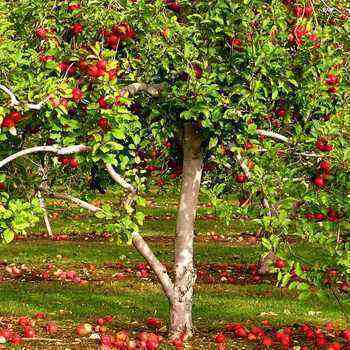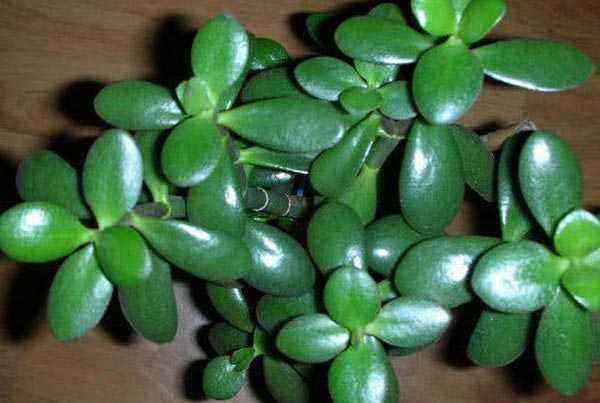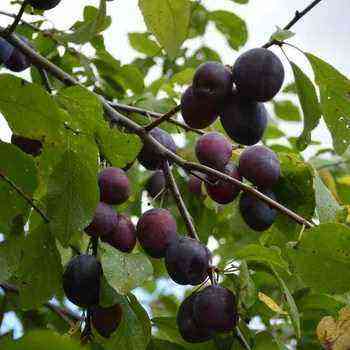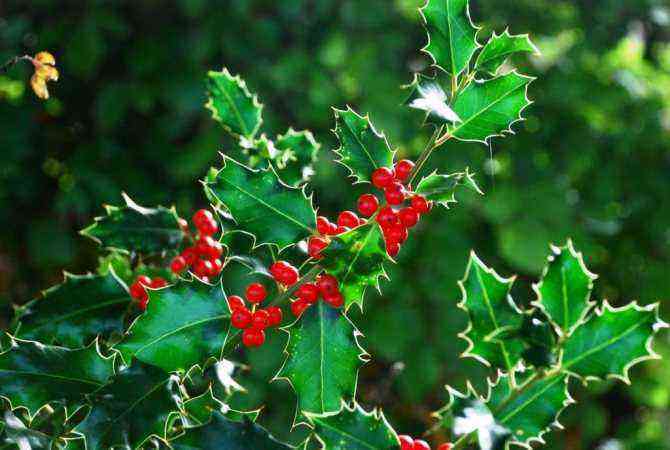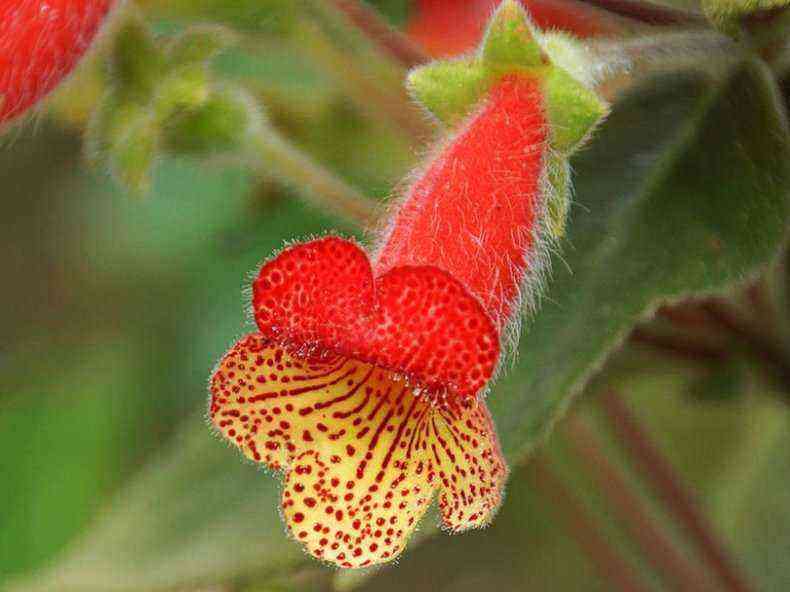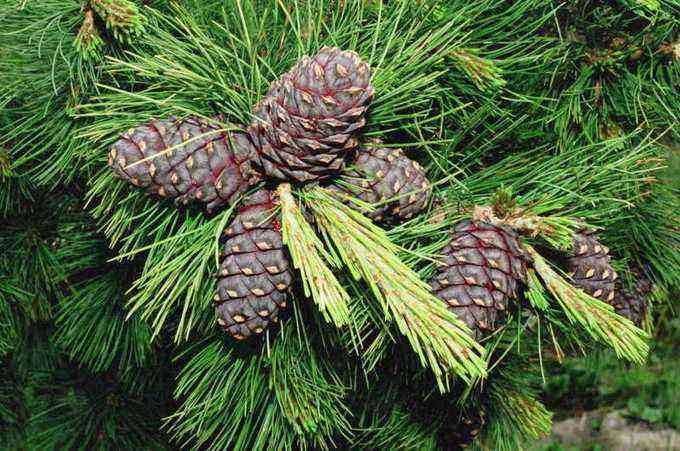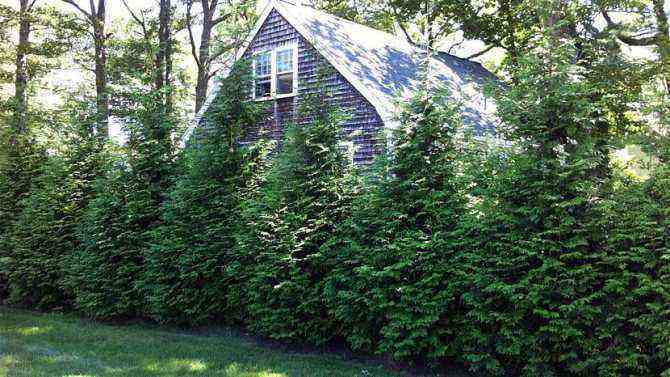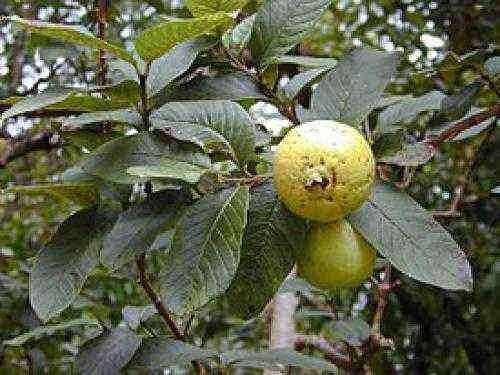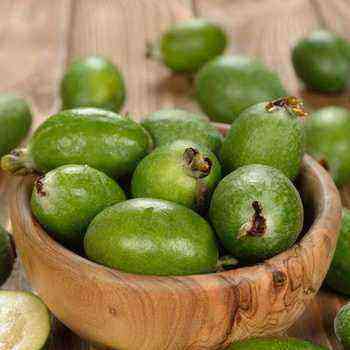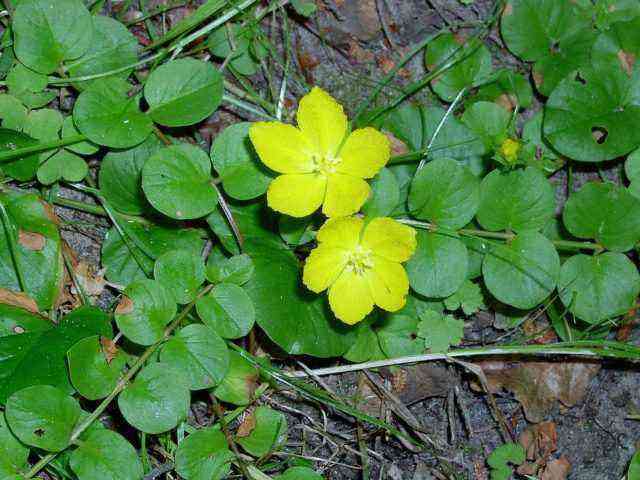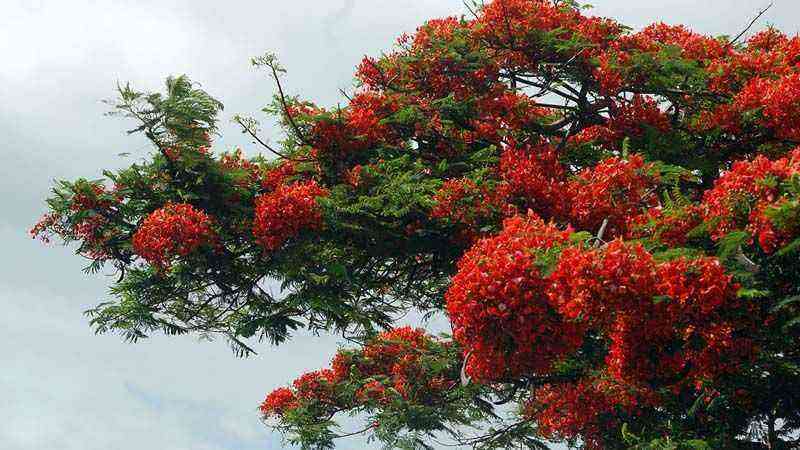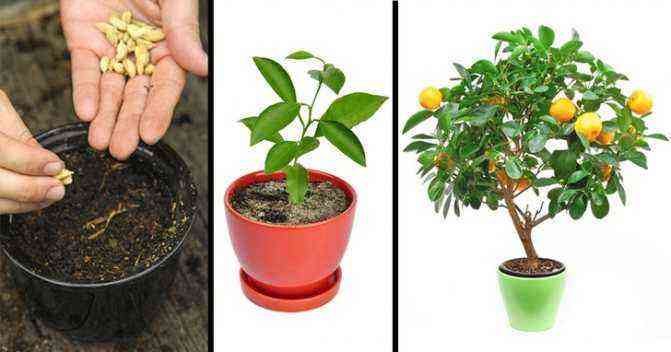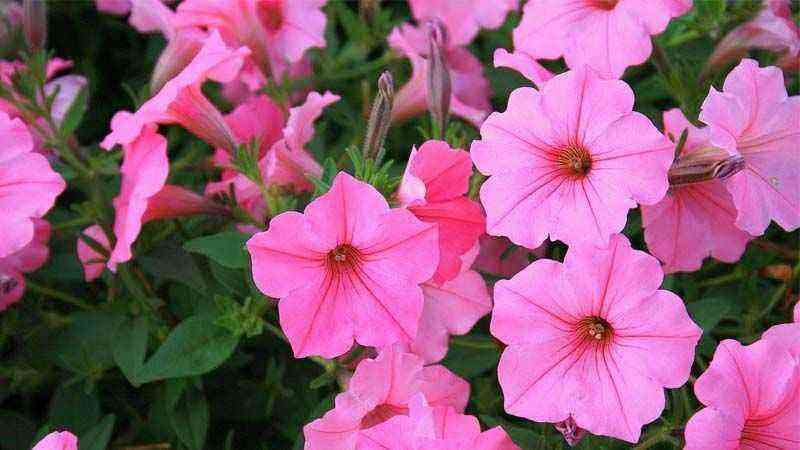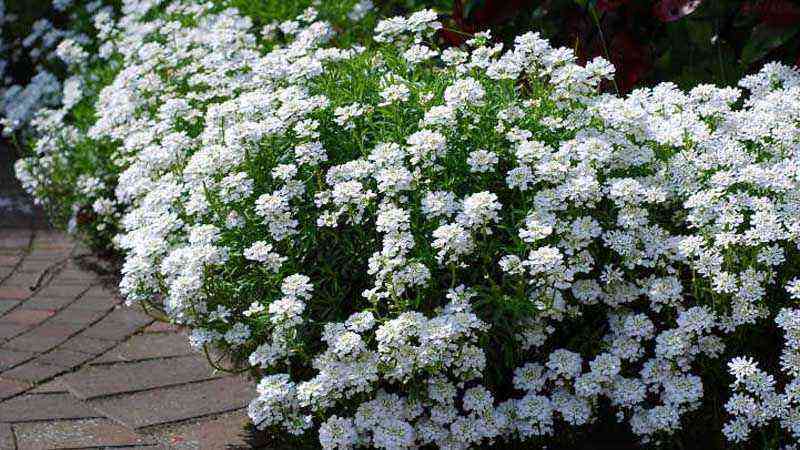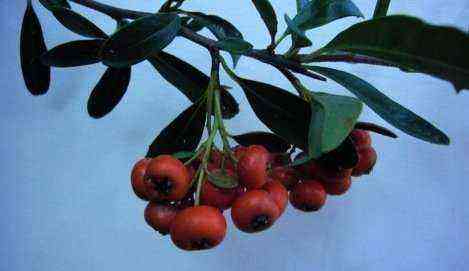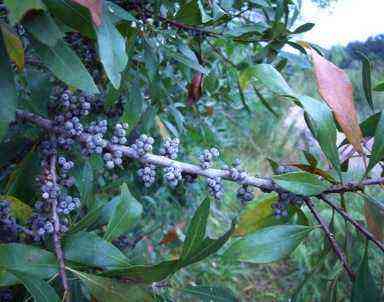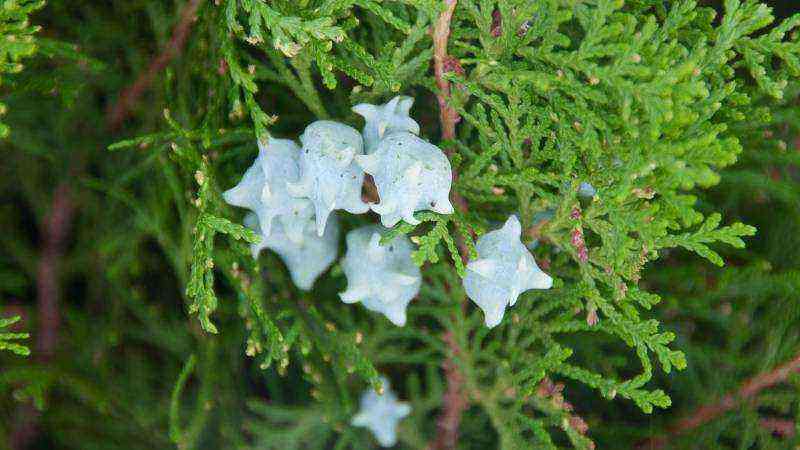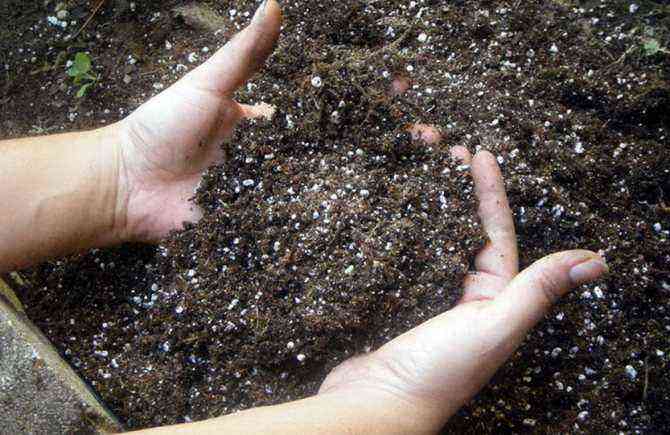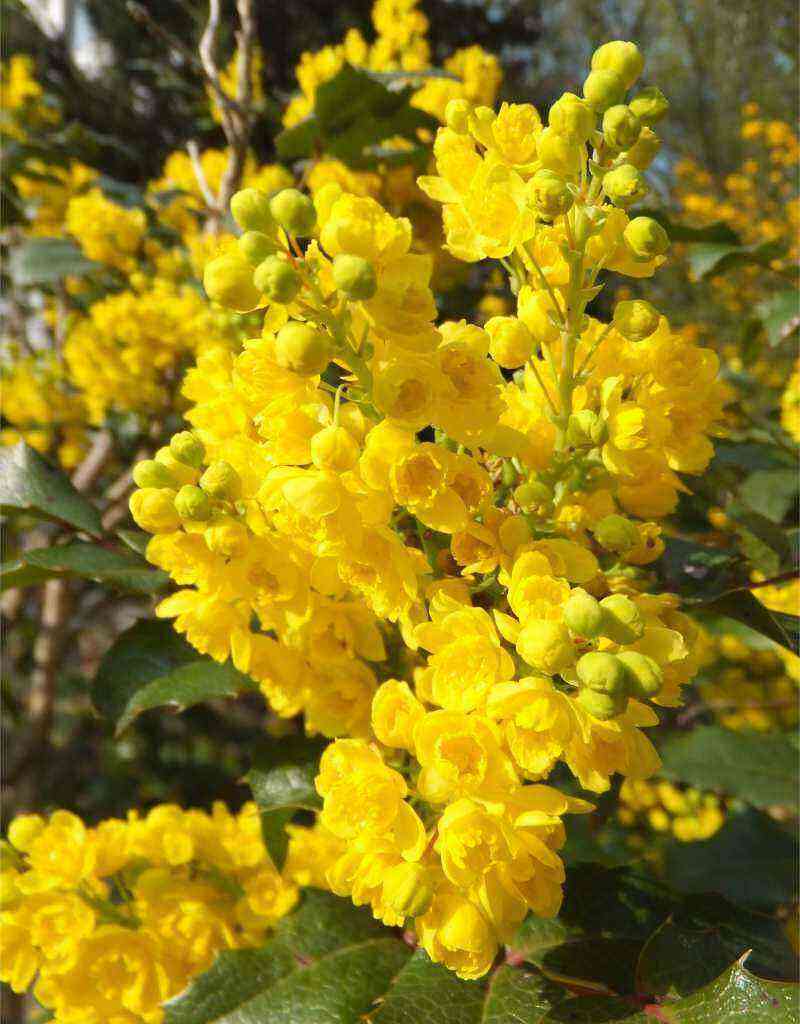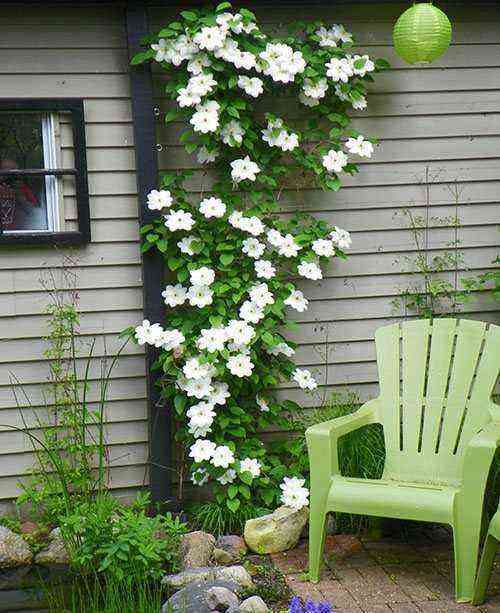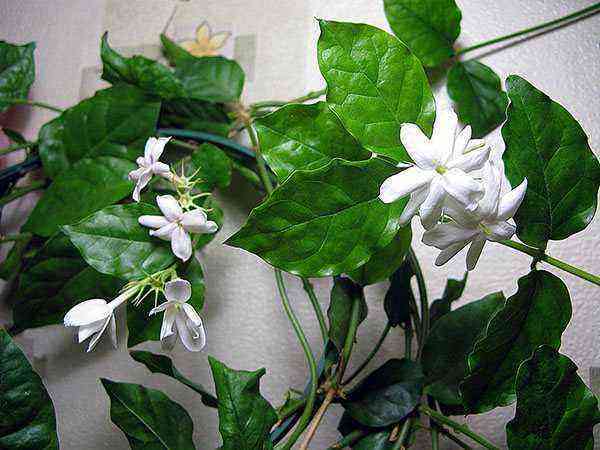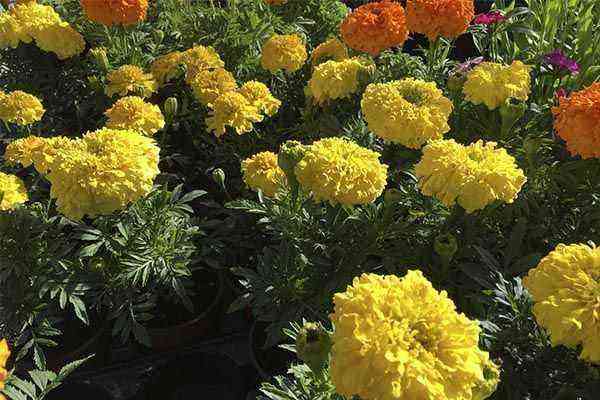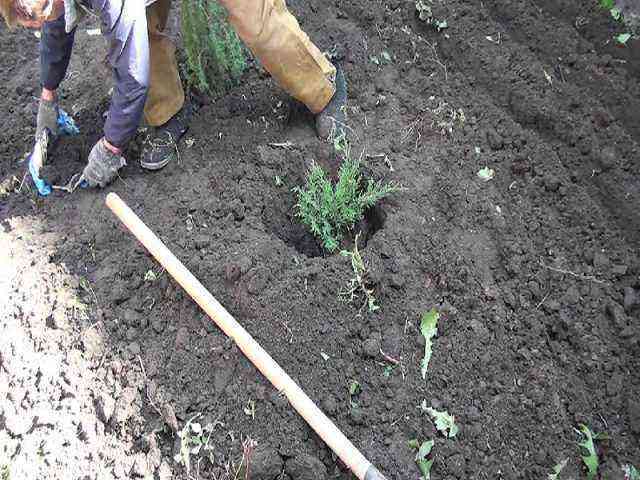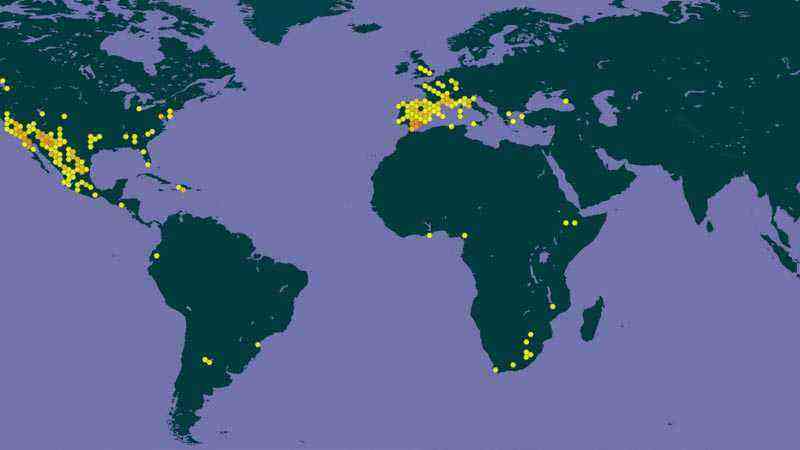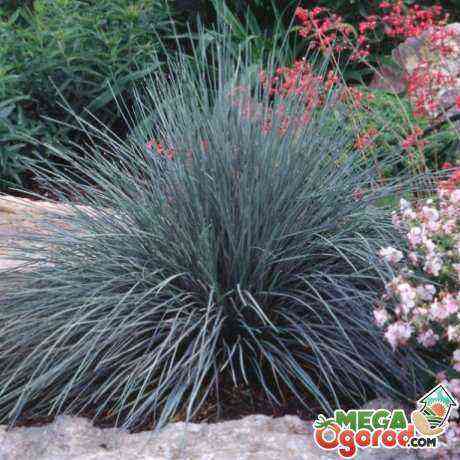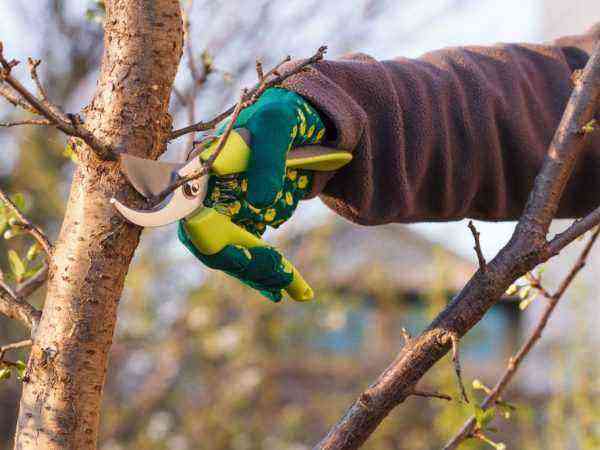The presence of a site is not only an opportunity to grow the desired crops, but also additional worries and troubles. And almost always there are shrubs in the garden. They, like other plants, need care. Watering, fertilization and pest control come to the fore. But pruning shrubs is an equally important procedure that requires compliance with the basic rules. We will talk about them in this article.
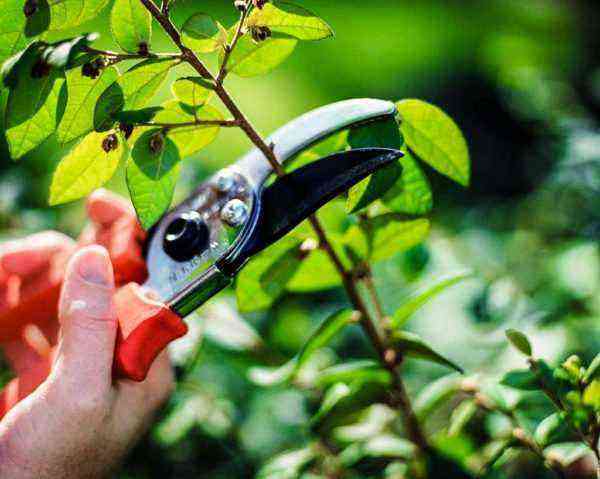
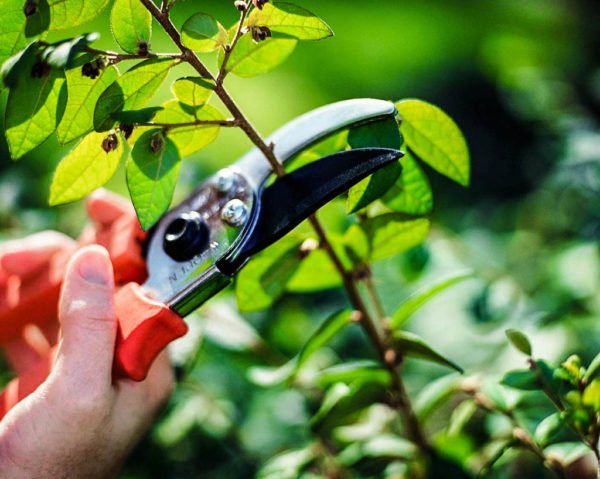
Shrub pruning: rules and tips
Do bushes need pruning?
The answer is unequivocal: of course, yes. Shrubs, more than other horticultural crops, need regular release from unnecessary branches and shoots.

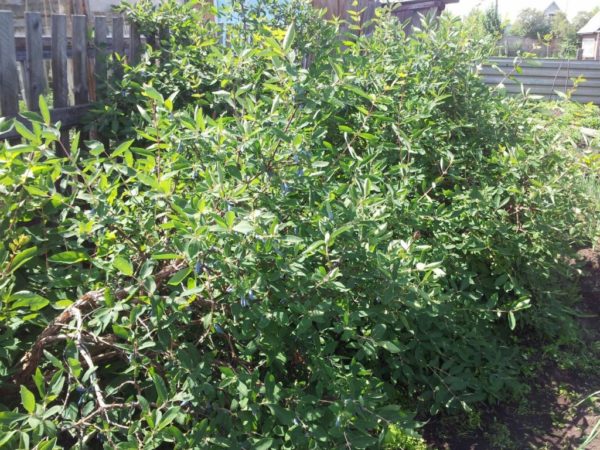
As it grows, the volume of the bushes increases, and the crown loses its shape and beauty.
Or the plant is sick and the damaged branches must be removed. One way or another, a haircut is necessary and important for shrubs no less than other grooming procedures.
Sanitary pruning
All shrub plants are subjected to this procedure. It is held in the autumn. Its main goal is to prevent infectious processes to which plants are exposed, and to prevent their decay. The procedure for pruning shrubs is simple. It is necessary to remove all damaged and broken branches, and in order for the crown to be well ventilated, it should be thinned out. To do this, part of the unripe branches growing inside the bush must be cut off at the level of two to three centimeters above the bud.
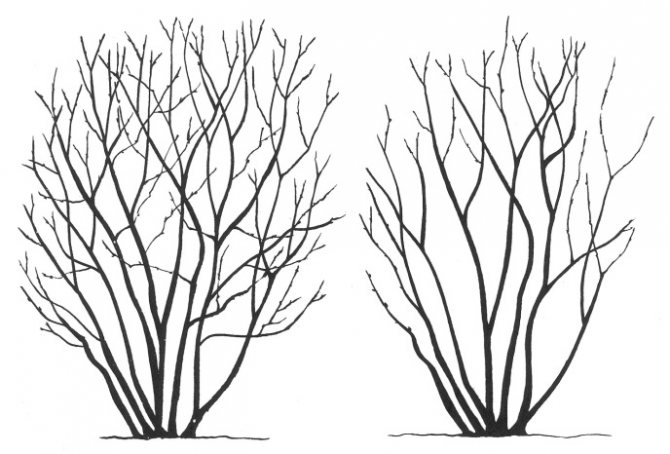

Types of trimming
It is the ultimate goals that determine what kind of pruning is required in a particular case. And here there are several types of this procedure.
Table. Types of shrub pruning
| Trim type | Goal | Time spending | The essence of the procedure |
| Sanitary | Prevention of a possible disease of the entire bush and getting rid of bad branches | Autumn (end of the growing season) | Removing broken, damaged branches, thinning the crown: shoots that have a direction deep into the bush are removed |
| Rejuvenating | Renewing old shrubs for lush flowering | Once every two years (February-April or from August-September) | The old branches are shortened, which promotes the activation of the growth of the appendages. Trimming is done at 35% of the top. The oldest branches are usually deleted. |
| Radical rejuvenation | Renewal of a shrub that is unable to produce either strong or weak shoots (activation of the growth of new buds) | As necessary and based on the condition of the bush (in the fall) | All branches are cut “at the root” (at soil level). New grown shoots are thinned out: the strongest are chosen, the remaining ones are cut to the level of the root collar every season |
| Formative | Giving aesthetic appeal to shrubs | Spring (before the start of sap flow), autumn (before the dormant period) | To reduce the volume of the tree, several branches are removed at the roots. You can eliminate branches growing inward, dry, lying down, and healthy ones. The main thing is not to overdo it and not make the crown loose. |
Note: if you want to admire lush greenery, bright flowering and beautiful bush shape for a longer time, perform all types of pruning, alternating them as needed.
Early Forming Trimming
In addition to all these types, there is one more – early forming pruning. Its name speaks for itself: using such a swift, you can form a beautiful dense crown of a bush already at the stage of the beginning of its growth and development. The first weeks of spring (before sap flow) is the ideal time to start pruning. As a rule, they make it to all the bushes that have just been planted on the site. The technology for early forming pruning is as follows:
- All branches that are 8 cm above the root collar are cut off.

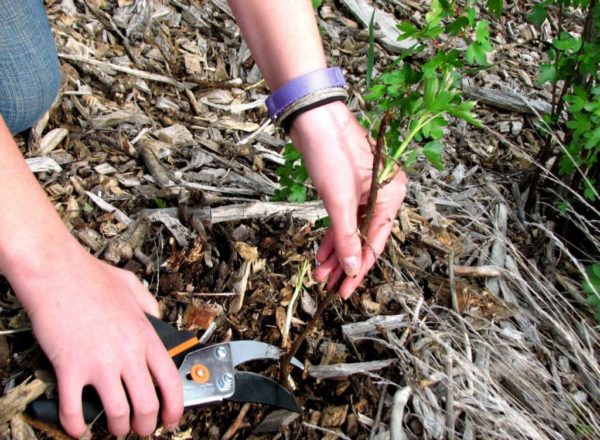
Cut off the sprigs of the seedling
- On the remaining hemp, new branches are already growing in the fall. They are left until next spring.
- With the onset of spring heat (the average daily air temperature is not lower than -5 ° C), the shoots are shortened to 3-5 buds.
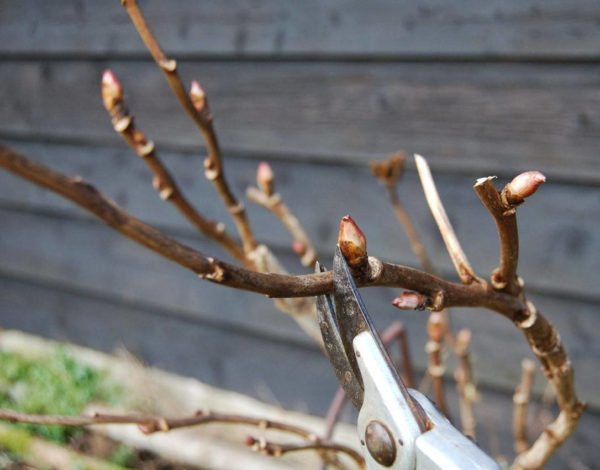
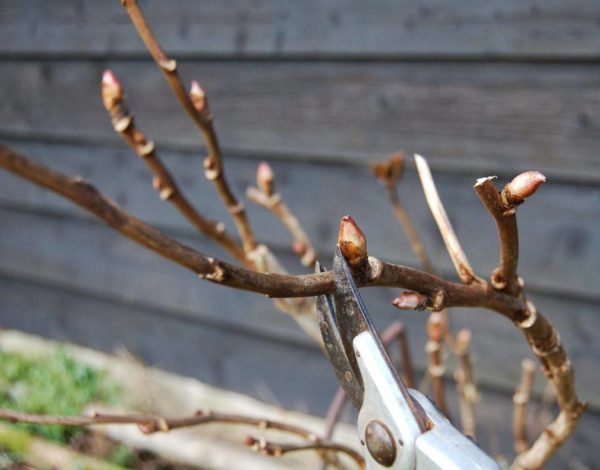
Leave 3-5 buds on the branches
- Over time, the bush will acquire the desired shape, which will only need to be maintained.
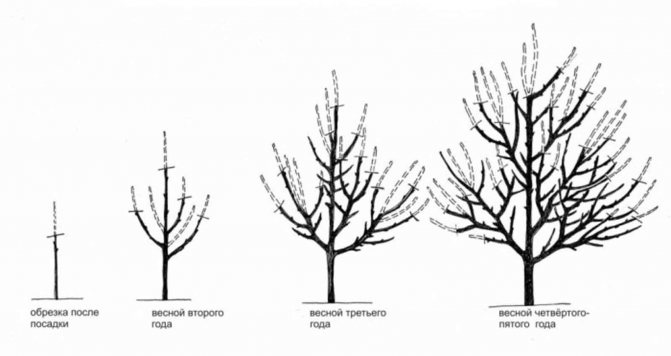
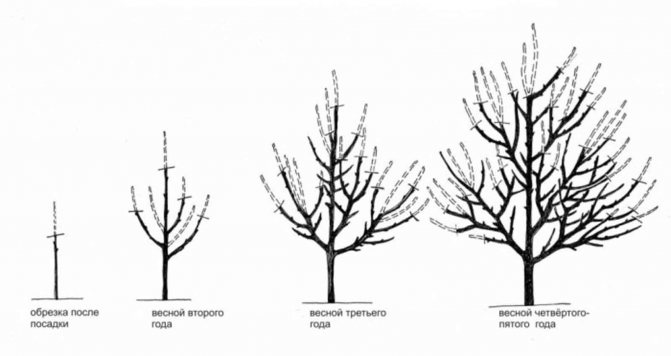
Repeat this procedure every spring for 3-4 seasons.
If you want to form a free-growing crown, consider the following:
- branched flowering crops are cut by ¼ of the entire length;
- weakly branched bushes cut harder, cutting off annual branches to the base (leave no more than 3-4 buds on the stumps);
- in plants with short internodes, about 10-11 buds should be left.
Important: do not cut conifers and evergreens until they are four years old. Once the crops are 4 years old, prune them annually in the summer (mid June and early August).
Rules for the formation and pruning of the crown
How to deal with aphids on fruit trees
When pruning and shaping the crown of trees, it must be borne in mind that fruit crops have five stages of life:
- Growth of vegetative parts
- Active growth and fruiting,
- Balanced growth with fruiting,
- Decreased growth and yield,
- Aging.
Pay attention! When pruning the branches of a fruit tree, you should definitely take into account its age, stage of life and choose the appropriate pruning method.
Types of crown that are obtained after pruning:
- Sparse tiered. Suitable for most fruit trees.
- Whorled-tiered. Makes the tree too tall, making it difficult to harvest manually.
- Deckless. Suitable for highly branched plants.
- Combined. Popular with cherries, pears and apple trees.
- Spindlebusch (fusiform). Suitable for low-growing trees.
- Bushy. For vigorous species.
- Semi-flat: for plums, cherry plums, apricots.
- Palmettes, cordons (flat). Suitable if you want to increase the yield.
accident prevention
Safety measures concern pruning processes and gardening issues:
- Sharp, heavy objects should not be thrown, only passed from hand to hand. Each of them must have its own cover during transportation.
- When carrying out the procedure, use gloves that will prevent damage, the occurrence of splinters.
- Keep children away from tools that are dangerous to them.
- Sharpen secateurs, knives in a timely manner. For storage, hooks are suitable on which you can hang an item.
- When pruning, use a stepladder or ladder with wide steps. Do not prune in rain or wet stairs.
- Wear comfortable shoes to avoid slipping.
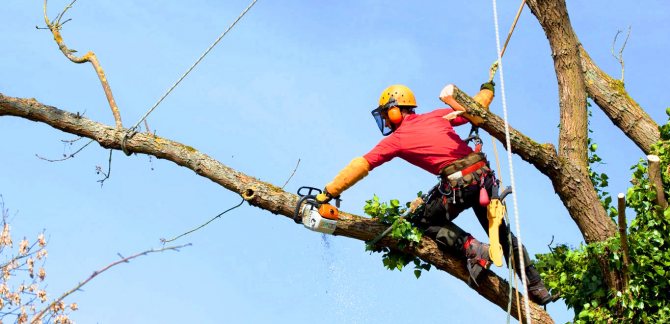
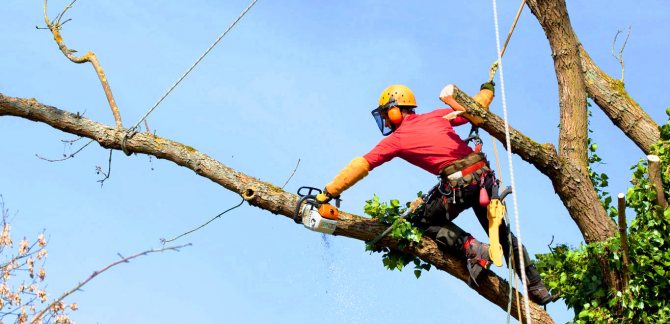
Pruning and crown tree
Pruning large branches on old trees
Old trees tend to have very dense wood, so improper pruning can damage the bark.
The incision should be made on the underside one third deep. About 3 cm retreats from the bottom cut, then the branch is cut from above. In this case, the bark will definitely remain intact and unharmed, it will not be able to peel off.
Trimming and cutting technology
Branches are shortened by removing this part from the total length:
- One third of the pruning is light shortening,
- Half is average
- More than half is strong.
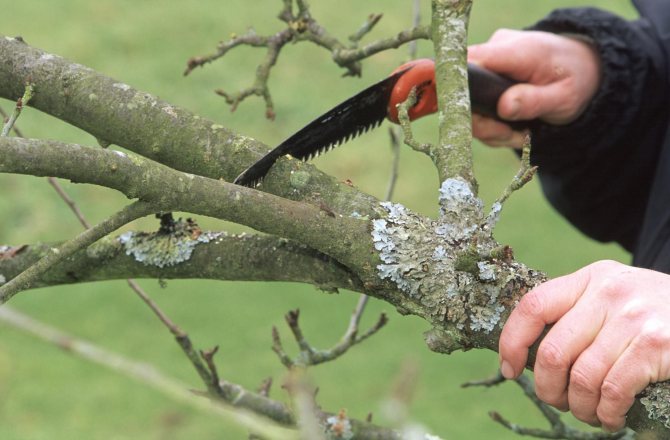

Rejuvenating pruning of a fruit tree
Technology:
- “Under the ring” – the cut is made on the upper part of the bead on the wood.
- Pruning whole branches – to get rid of unnecessary branching, in order to penetrate the sun color to the inside of the crown.
- Kerbovka. A rare event that is carried out to slow down growth processes.
Pay attention! Some time before the end of the growing season, a pinching of the growth bud is done, after which the formation of annelids and lateral strong branches begins.
Crown formation scheme
There are a lot of schemes for forming the crown of trees. The most popular are:
- Longline trimmed. Creates a strong plant skeleton.
- Cup-shaped. Perfect for apple trees, creating a solid base.
- Fusiform. Requires annual manual labor.
In annual apple trees, crown formation occurs after planting. Saplings do not differ in strong branches, therefore, at the first pruning, it is important to achieve a good result so that the active growth of new shoots begins.
Trimming time
It is very important to start cutting the shrub correctly and on time, because pruning done at the wrong time can significantly harm the plant. Therefore, there are different periods for this procedure: spring, summer, autumn.
Note: winter pruning is not encouraged; it is carried out only if necessary and only in the southern regions. This is due to the fact that with a strong minus, the sections do not overgrow.
Spring
The traditional time for “hairdressing” garden work. As a rule, this is March-April (in central Russia). However, it is important not to miss the moment here, because when the buds begin to bloom, it is no longer possible to cut the plant. In the south of the country, where sap flow and flowering begins much earlier, some trees and shrubs are cut in February, until the dormant period has come to an end.
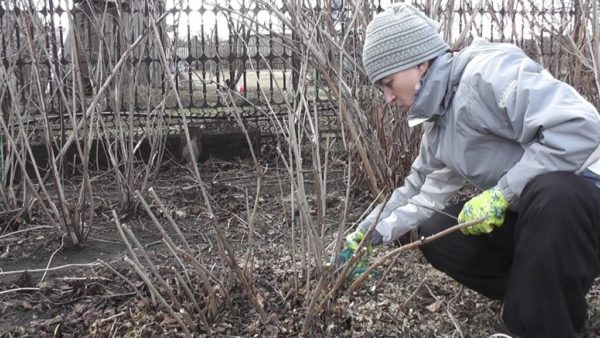
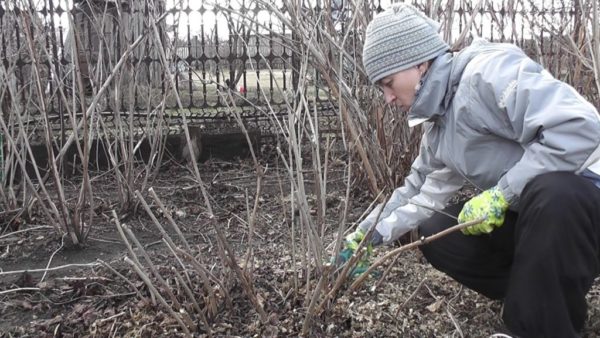
Spring pruning is carried out before the buds bloom.
The climate of the northern regions of Russia dictates its own conditions: early pruning is not carried out. This is due to the fact that in severe frost, the edges of the cut wind up (even if they are covered with garden pitch), which leads to the necrosis of the wound, its long overgrowth. Thus, in Siberian and Ural gardens, pruning begins when the temperature is above zero. Moreover, if the winter was distinguished by its severity, the bushes this season are not pruned at all.
Usually, the first to begin to cut off are crops in which the buds swell early – berry bushes. Then the fruit trees are pruned. They are followed by grapes, roses, ornamental bushes.
Summer
During the period when all crops are growing, it is also possible to trim. As a rule, it is additional in nature and is applied in relation to adult trees. At this time, the apple crown is corrected, unnecessary shoots are removed, crops that have faded in early spring are cut off. Early summer is a great time to trim evergreen shrubs (like boxwood), hedges and lemongrass.
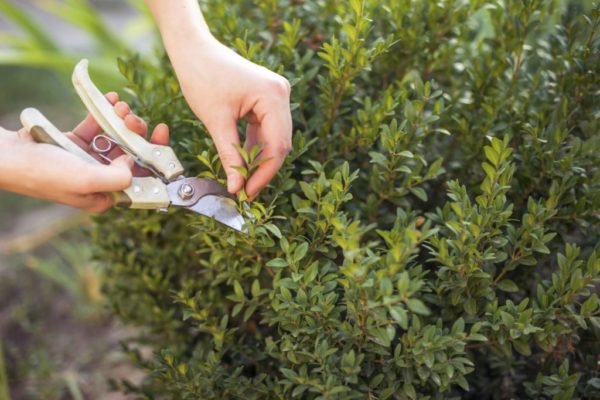
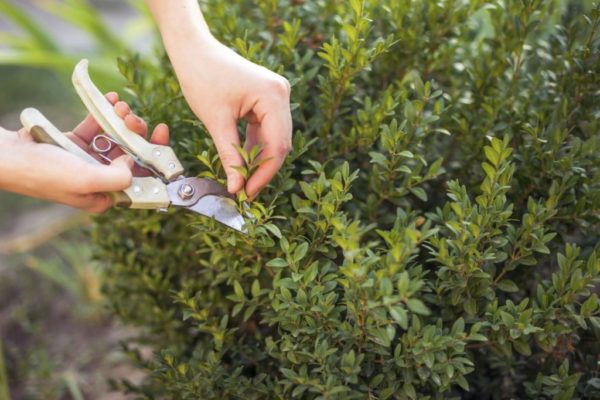
Summer is the perfect time to trim boxwood
It is dangerous to cut this plant in spring: it has early sap flow, so it is easy to injure it, which will lead to death. A sanitary haircut can also be done during the summer months if necessary.
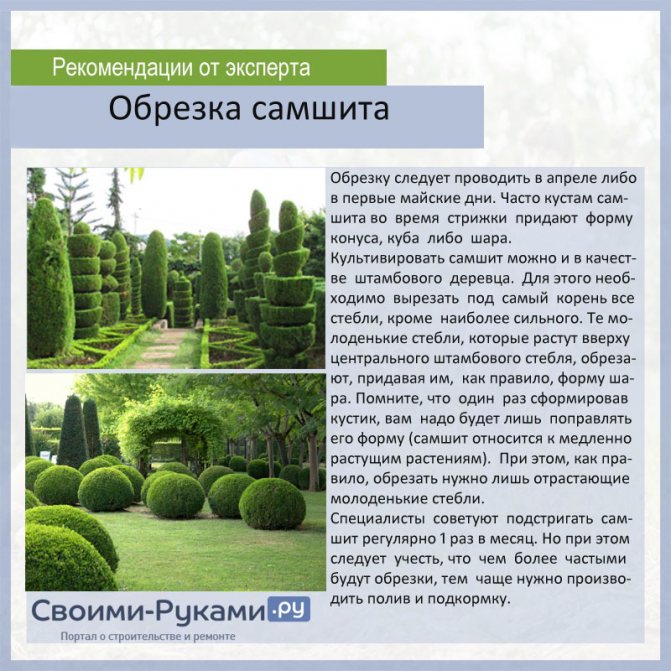
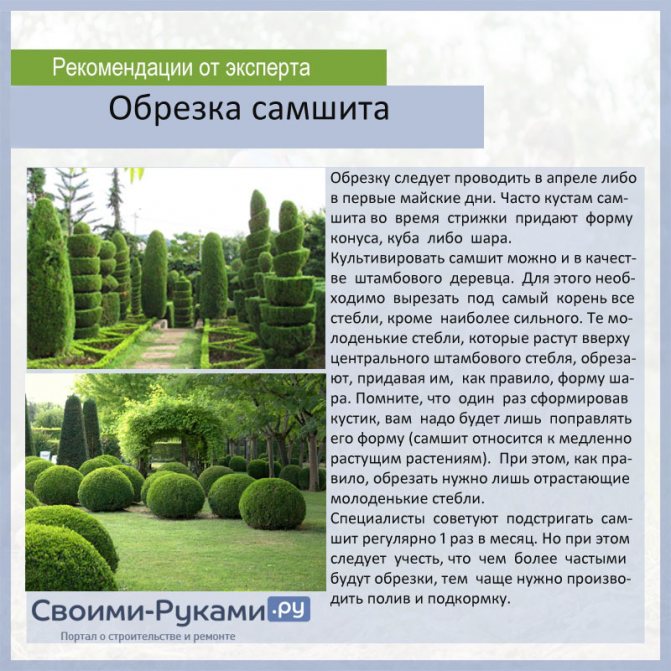
Pruning boxwood
Autumn pruning
During this period, it is recommended to cut berry bushes, preparing them for winter. So, in raspberries, fruiting shoots are removed.
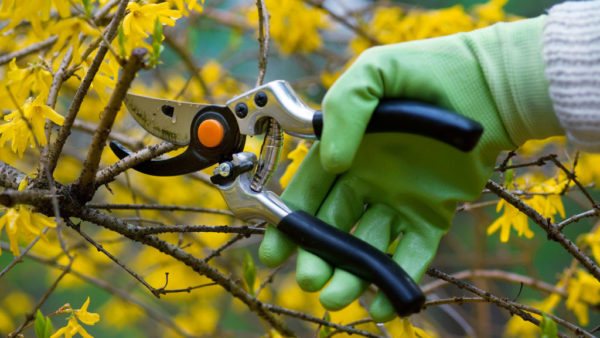
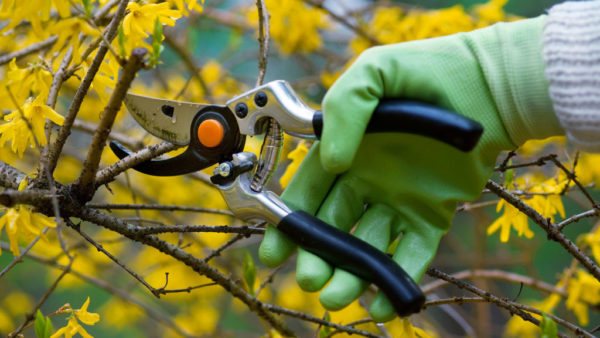
The main purpose of autumn pruning is sanitary
Also in the fall, it is allowed to cut shrubs that form their flower buds on last year’s shoots. They are cut 30 cm from the soil. After such a procedure, new branches grow, they will have the main flowering. Autumn pruning is carried out every season, or less often – it all depends on the intensity of the thickening of the bush.
It is necessary to monitor the appearance of the culture, and, as necessary, carry out the type of haircut that is required at the moment.
Video – Timing of pruning shrubs
Processing a tree after a saw cut. Timing of processing hemp on fruit trees
The timing of covering the cuts on apple trees depends on the season and current weather conditions. So in the fall, during the heavy rainy season, the sections dry out badly and for a long time – sometimes you have to wait at least a week for the wound to stop getting wet, and it could be fully treated. In sunny warm weather, the cuts dry out in just a couple of days.

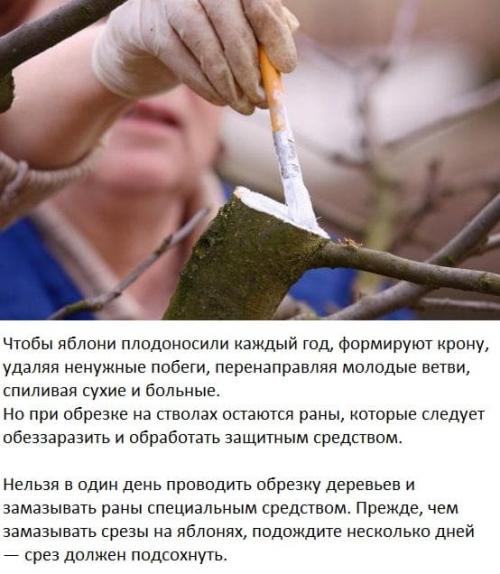
During summer pruning, only very young, not yet woody shoots should be removed. Small-diameter sections heal quickly on their own and do not need special treatments. At low air temperatures, wounds practically do not heal at all, even with proper treatment.
In winter, the sections are not processed at all.
Slices, the diameter of which does not exceed 2.5 cm, are disinfected, but not covered with anything. They tighten themselves and quickly enough, they do not pose a danger to the tree. With cuts more than 3 cm in diameter, they work strictly according to plan – immediately after trimming, the wound is cleaned of roughness, burrs using a sharp garden knife, the cuts are smeared with a brush with a special solution that disinfects the wound and protects it from bacteria and infections. Then the cut is left to dry for several days, after this period, a special treatment is carried out without affecting the bark of the tree along the extreme parts of the cut. If in winter the bark is damaged by rodents, it is cracked due to temperature fluctuations or received a sunburn, the treatment is carried out in the spring (the temperature should be above zero). Damaged areas are cleaned to healthy wood, then processing is carried out in the same way as after seasonal pruning.
Three trim groups
There is a huge variety of garden shrubs in the world. And everyone needs some care, including pruning. The need for a haircut depends precisely on their varieties. All ornamental shrubs are divided into flowering and deciduous.
Spirea is a representative of flowering shrubs One of the most beautiful decorative deciduous shrubs is Japanese maple
The task of ornamental crops is to decorate the site, which means that the main purpose of trimming them is to achieve the most aesthetic appearance. Recommendations for removing unnecessary branches depend on which of the groups this or that plant belongs to. There are three trim groups. Consider them in more detail below.
Attention: in order to know when to start deleting branches, you need to determine which group your bush belongs to.
1st trimming group
These are crops that give growth along the perimeter of their crown. They only need a minimal haircut. As a rule, this is early pruning (spring, before sap flow). This group includes: cotoneaster, viburnum, daphne, lilac, turf, maple, hibiscus and many others.
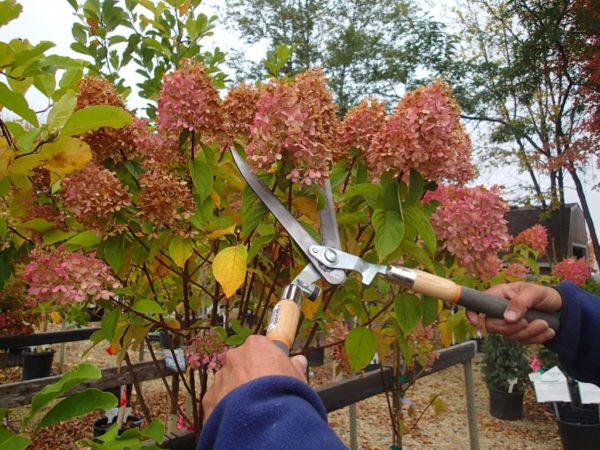
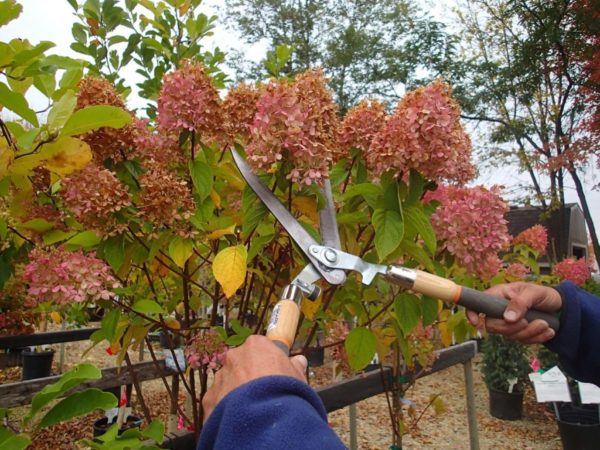
Lilac – shrub of the first pruning group
During the first three years of the life of the bush, take care of the formation of the skeleton of the bush. All weak, crossed branches directed inward and spoiling the neat appearance of the culture are subject to removal.
2st trimming group
These are crops whose flowering occurs in the spring or summer (beginning) period and occurs on the shoots of the last season. Spring-early summer is the time when they bloom. Such bushes usually grow very actively, therefore planting is recommended at the age of 2-3 years. In the spring, only diseased, dry and broken branches are eliminated from this group. The main pruning takes place in the autumn: then the faded branches are removed. This should be done every year. Typical representatives: hydrangea, action, wagel, chubushnik, almonds, spireas and others.
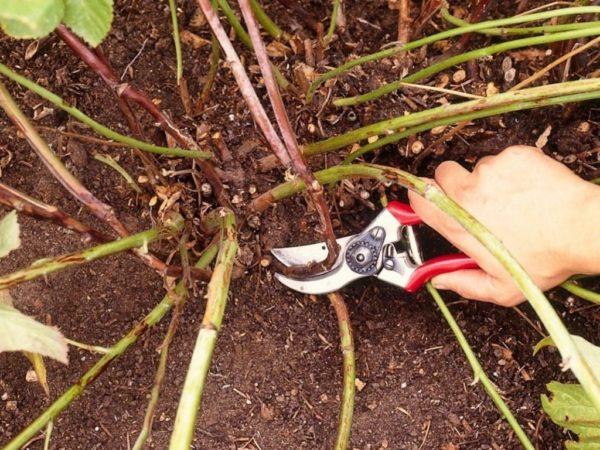

Do not forget to remove ¼ part of last year’s shoots under the root
3st trimming group
These are bushes that give color on the shoots of the current season. it paniculate и tree hydrangea, glandular cherries, etc. At the initial stage of growth (the first 3-4 years), haircut is not so important for such crops, they are gaining strength. And only after that, it is worth starting an annual fairly strong pruning. In early spring, remove a large number of branches – this will stimulate shoot growth and a splendid flowering. If this is not done, by autumn the bushes will overgrow too much, which, of course, will not have a favorable effect on their appearance.
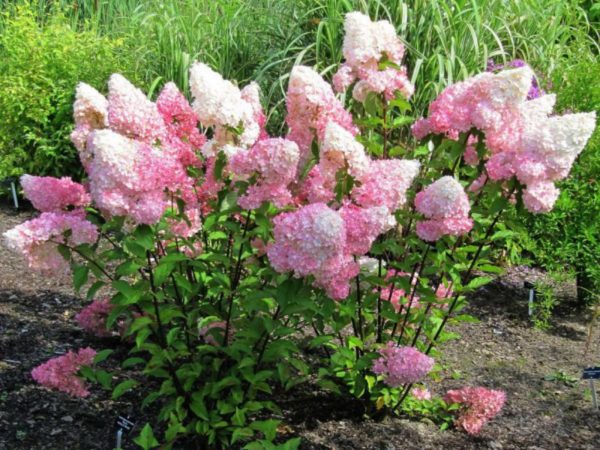
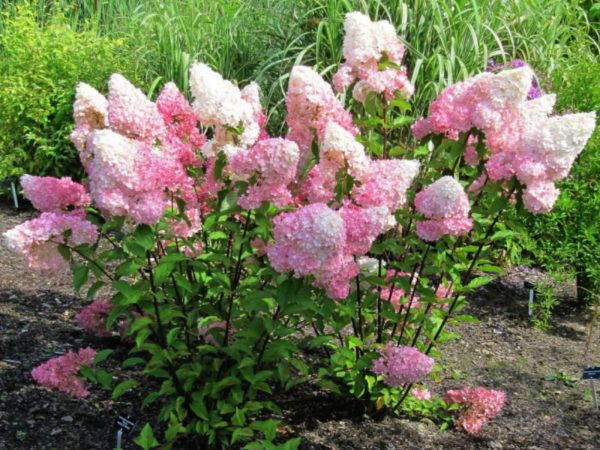
Hydrangea paniculata – a typical representative of this group
How to cover the cut branches of the apple tree. Planning and regularity
It happens that mistakes are made even at the planning and laying stage of the garden, when the site is not correctly divided into zones (parking, recreation area, flower beds, vegetable garden and garden). New buildings and paths may appear in the existing garden. New plants require placement in densely planted areas. This can lead to excessive compaction of landings, lack of light and water. The thickening of the plantings leads to the stretching of the plants upward, the exposure of large areas located in the shade of the branches and the displacement of the vegetative mass to the top of the crown. This makes it difficult to further form trees and harvest fruit.
The most common mistake gardeners make is the lack of garden maintenance. Many people believe that fruit trees and shrubs grow on their own and there is no need to intervene in this process. Such an attitude to the garden leads to the accumulation of a huge mass of dried and diseased branches in the crowns, the stretching of the plants upward, the crowns growing into each other. The frequency of fruiting appears, which is especially pronounced in apple trees.
If a master has visited your garden and made a pruning, this does not mean that you can forget about this procedure forever. After a strong pruning (and in neglected orchards, there is no other pruning), Fruit trees, especially apple and pear trees, “get scared” – in the places of the cuts, special substances are released that stimulate the awakening of dormant buds, from which “tops” or “fatties” are formed ( vertical shoots with very strong growth). Such a shoot can germinate through the entire crown in several years, giving branching. And there can be up to several dozen such shoots. In fact, a new crown is formed to replace the old one, while the old crown remains in place. Spinning tops require a huge amount of resources for their nutrition. Naturally, the harvest suffers, and the crown turns into chaos. It is necessary either independently and annually in June to get rid of such shoots simply by breaking them out, or regularly (at least after a year) invite a specialist to the garden.
Pruning tools
It is important to choose the right working tool. Different bushes have completely different branch thicknesses, and therefore the pruning tools are different:
- Pruner. This device easily cuts branches up to 2 cm in diameter. There are pruners with two types of blades: straight (good for work, but not suitable for hard-to-reach places) and curved (operate on the principle of scissors). It is necessary to sharpen on time and with high quality, since a not too sharp pruner will not make an even cut and damage the bark.
Straight pruning shears easily cut branches Pruning shears with curved blades
- Lopper. Designed to remove shoots 5 cm in diameter. With this tool, it is good to cut off even those branches that are located deep in a dense lush crown. And this is a clear advantage of such a device over the pruner. There is also a rope lopper, it is used to eliminate branches growing very high.
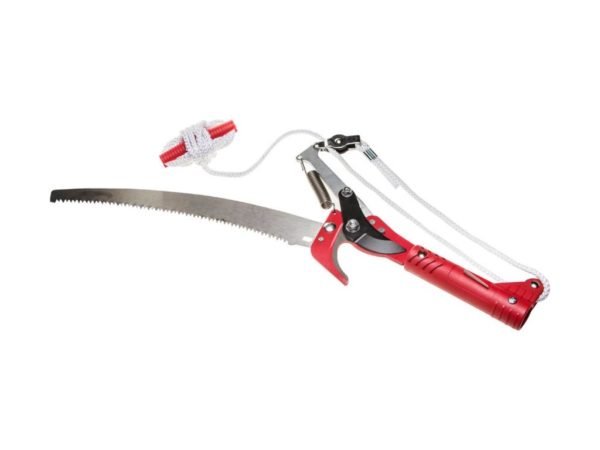

Rope lopper
- Knife. The most commonly used tool in the garden. This is due to its versatility, because with a knife you can easily cut and clean thin branches, align a curved cut or remove the bark from the trunk.
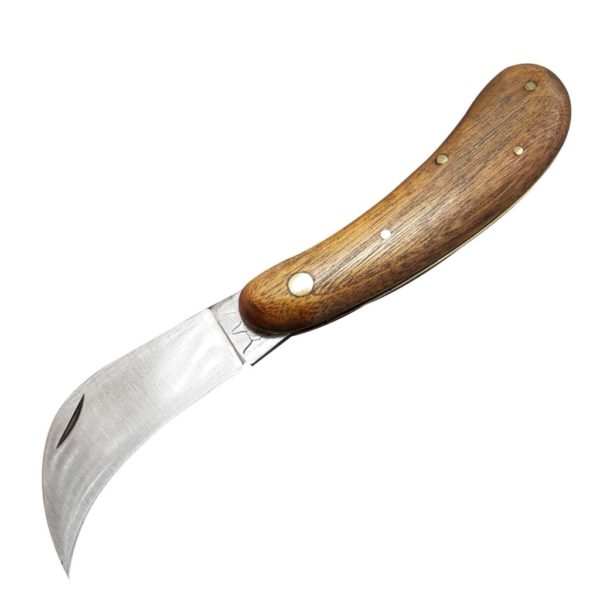
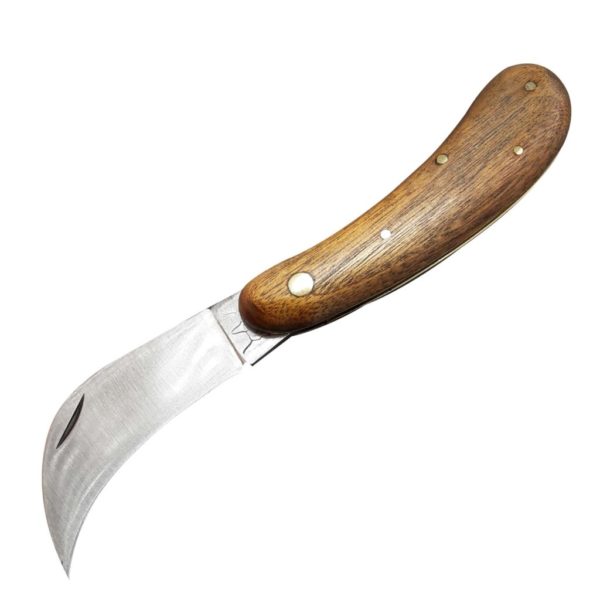
Garden knife
- Saw / hacksaw. Good for removing thick branches. The advantage of this tool is its ease of use: due to the wide arrangement of the teeth, they are not clogged with sawdust.

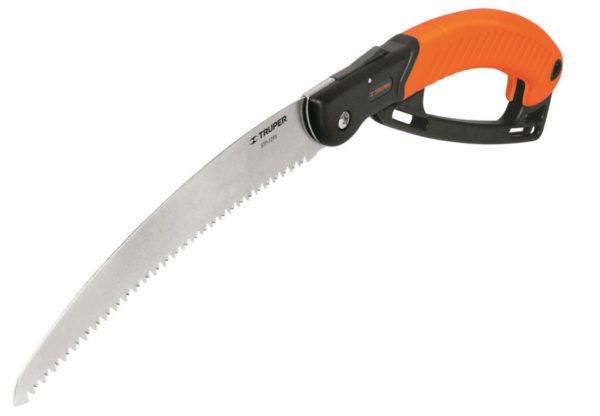
Garden hacksaw
- Scissors (special). This is a great tool to shape the crown, to give it a certain shape.
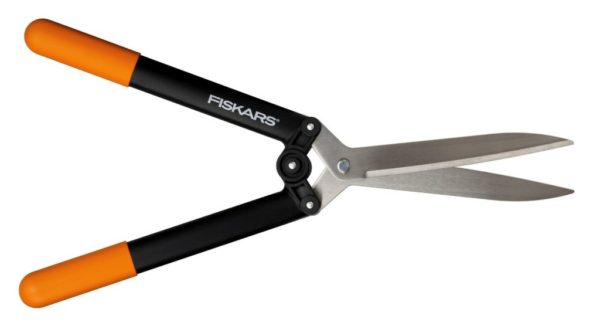
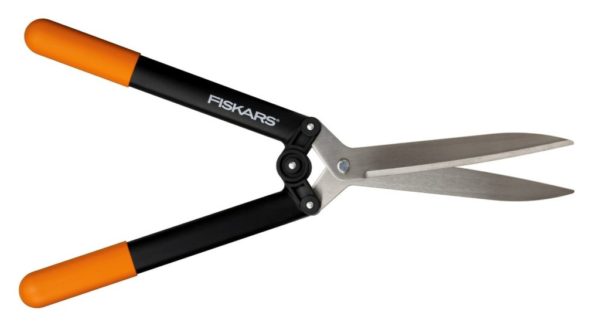
Garden shears
- Ladder. The inventory, without which it is difficult to imagine the average garden. With its help, you can reach even tall branches. The stepladder must be stable, for this, during operation, make sure that its legs are wide apart and do not swing.
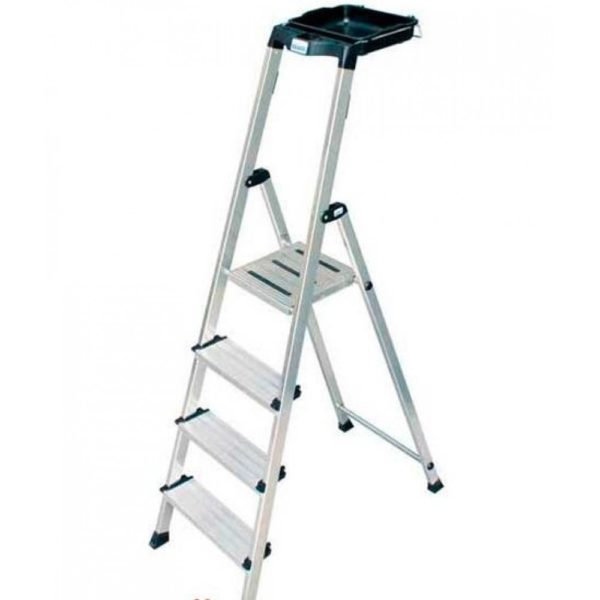

Garden stepladder
- Ropes, spacers. These are additional accessories that may also be needed for gardening.
Note: it is better for the inventory to be colorful and bright. This is necessary in order not to lose it in the green of the grass.
When choosing tools, give preference to those that are not too heavy, fit comfortably in the hand, do not slip out, and the parts are securely and firmly fixed.
Types of tools
So that pruning of garden trees and berry bushes does not seriously harm the state of your crops and is as comfortable as possible for you, you should use a high-quality cutting tool. The pruner is essential for proper pruning. If you are the owner of a young garden, then at first it will be enough. In order to rejuvenate trees and shrubs, sawing branches that are more than 50 millimeters thick, we recommend purchasing a garden saw. Another name for it is a garden hacksaw. To carry out the planned actions in hard-to-reach places, inside bushes, we advise you to have a lopper on the farm.

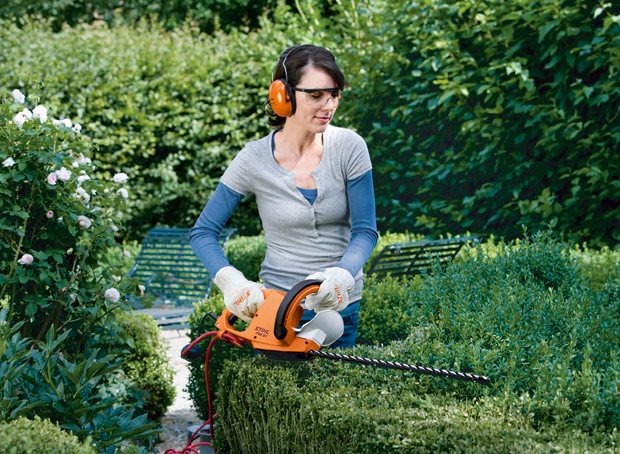
The requirements for working tools that will be used for pruning fruit bushes are not complicated. They must be sharp enough to get even cuts. Safety and comfort during operation are important. The pruner or lopper should have tapered ends to help you reach branches that are too far and high. With their own low weight, the tools must be able to withstand any force. The handle should not be slippery to the touch, preferably.
Branches are cut with pruning shears up to 25 millimeters. There are two types of them – the bypass blade has a convex blade that slides over the surface of the concave one, the pruner with an anvil has a wedge-shaped working blade with double-sided sharpening, works on the principle of an ax. The secateurs of the first type are recommended for cutting living wood, the second for dried branches. The long handles create a lever that allows you to cut tall branches without a ladder.
Rules and technology for pruning trees and shrubs
Before you start trimming trees, you need not only to acquire the necessary equipment, but also to learn some of the intricacies of trimming plants. So, in order not to harm the bush (especially the young one), when removing unnecessary branches, be guided by the following rules and follow the pruning technology:
- Do not cut many large branches at once in one procedure – this will weaken the bush and may contribute to its death. It is better to delete several branches every year than massively once every few years.
- It will be better for the bush if you pinch a small shoot than it will later grow and you will cut it off.
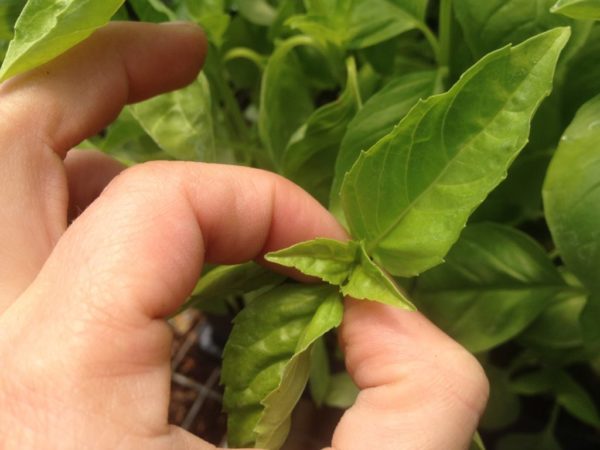
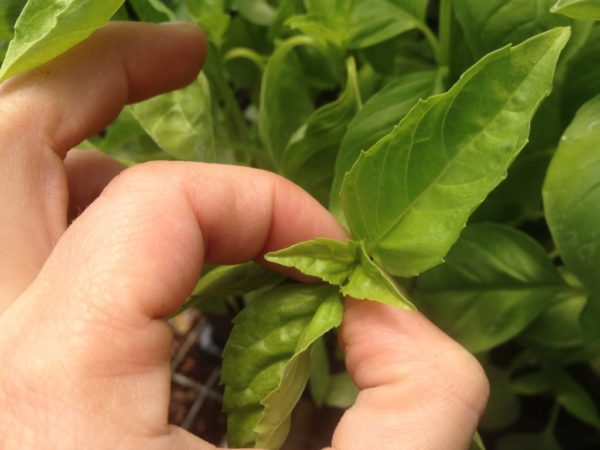
Pinch unnecessary small shoots periodically
- A healthy shrub has 10-15 branches of different ages.
- It is better to complete the formation of the crown of the plant by 4-5 years.
- Old branches (6-7 years old) must be completely removed.
- The first thing to be removed is the painful and damaged branches.
- It is forbidden to leave split sections.
- If it is necessary to saw off a branch completely, you cannot leave a stump. Make a cut “on the ring”.
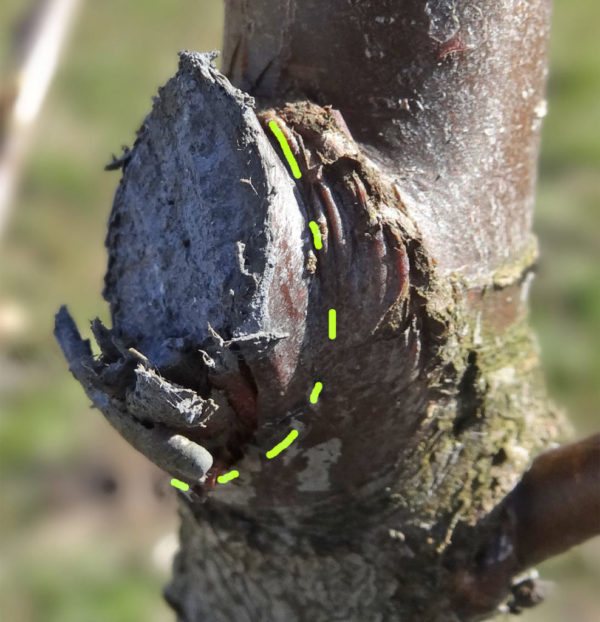
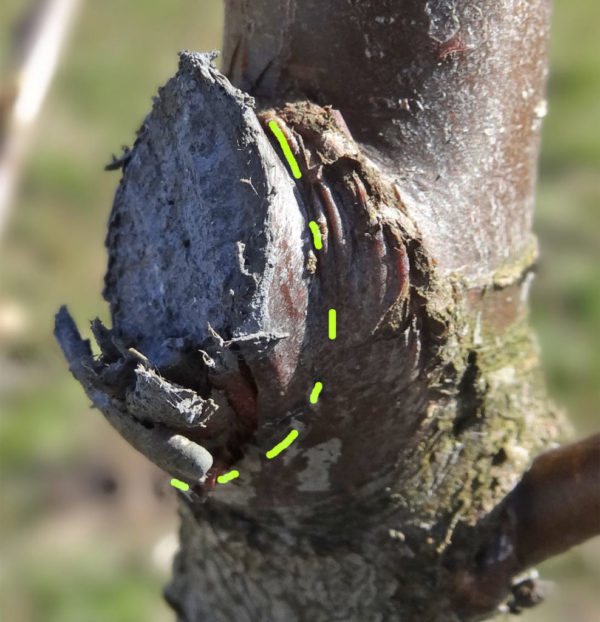
Do the saw cut right: no stumps or splits
- When a branch of considerable thickness is to be cut, start sawing from the bottom and finish at the top. Otherwise, when falling, he can tear off the bark from the trunk, thereby causing unnecessary damage to the plant.
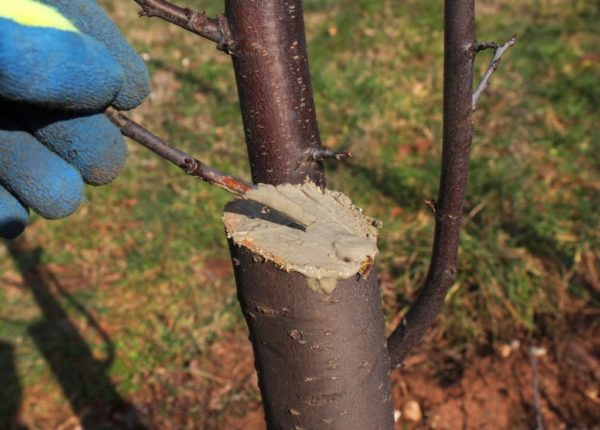
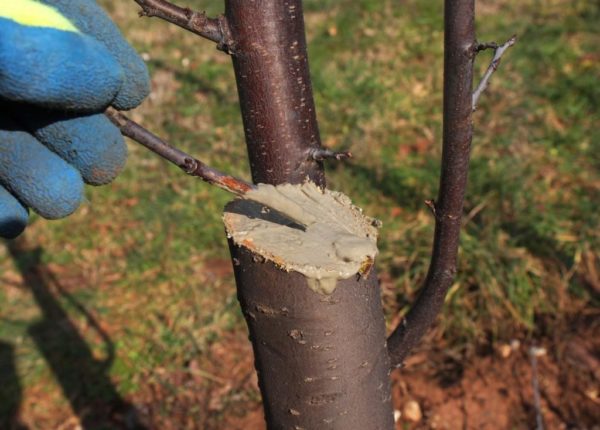
Cleaning and processing the saw cut is the most important event
- If you cut a very large branch (more than 2 cm in diameter), clean the saw cut with a knife and cover it with garden resin.
Important: garden resin (var) – a substance that helps to heal wounds on trees. Its main ingredients can be paraffin, rosin and vegetable oils.
- Never use blunt instruments, they cause wounds to the plant that will have to heal later. It is best to purchase quality tools for gardening.
- If you are cutting standard grafted shrubs, remove the growth around the root collar. This should be done in early October.
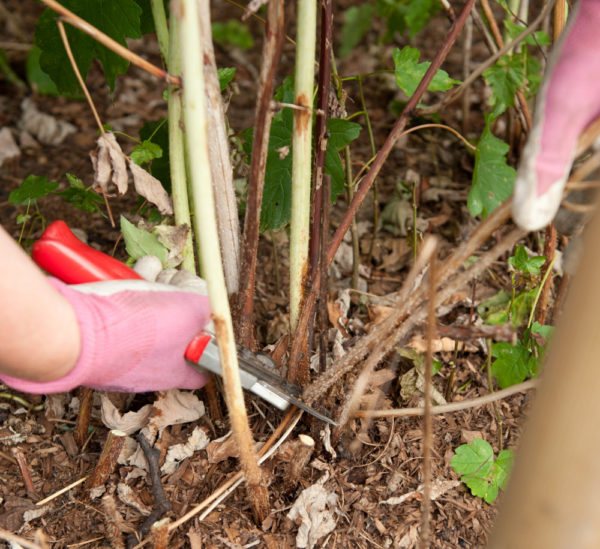
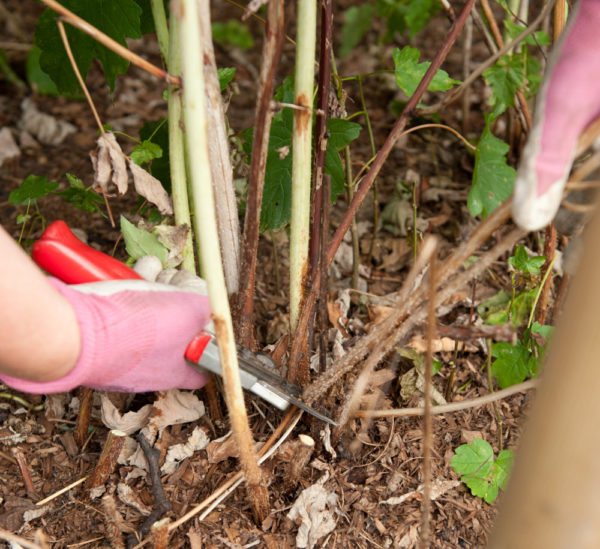
Cut the side shoots to the root, and then cover with dry soil
- Keep an eye on the condition of pruners, scissors and all gardening items: they must be clean, because dirt can contain harmful substances. In addition, it is easy and pleasant to work with a clean instrument.
- If the bush is too tall, be sure to use a stepladder. Do not try to climb tree branches, it is dangerous for you and can harm the plant.

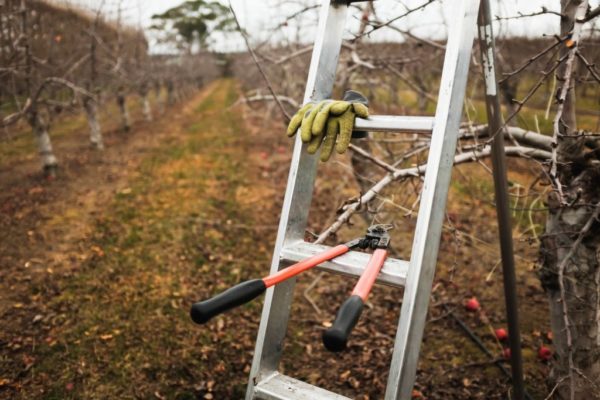
The stepladder will greatly facilitate gardening work
- All remote branches must be disposed of. It would be best to burn them. So you will prevent the spread of parasites and diseases, moreover, the resulting ash can be used as fertilizer.

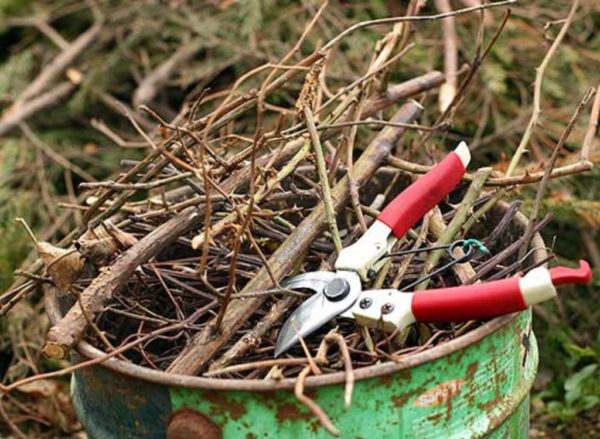
Dispose of pruned branches
Video – Tips for pruning shrubs
Pruner: form and content
When choosing a pruner, the first thing to look at is its shape. The best cut quality is provided by models with a pronounced curvature of the counter-cutting part, since straight “scissors” during operation will, as it were, push the branch out of their “beak”, tearing the bark into rags.
Pruner. Photo: AiF / Nina Belyavskaya
The better the quality of the metal the pruner is made of, the longer it will live. In addition, harder steel blades allow for smoother, smoother cuts and better “hold” sharpening. It’s easy to check: you need to as discreetly as possible (so as not to embarrass other buyers if this pruner does not suit you with something) rub the cutting part with a medium-grained abrasive bar. If the steel is good, it will be very difficult to leave scratches on it.
As for the various “bells and whistles” like a ratchet mechanism, a rotary handle and the like, you should be guided solely by your preferences: as they say, all pruners are different in taste and color.
Ways of trimming
Shrub trimming has a great effect on the development and appearance of the shrub. If you cut off excess buds, nutrients will begin to be more actively distributed from the roots to the branches of the tree. There are two main pruning methods for this purpose.
Shortening
With this method, the upper part of the shoot is partially removed. Use pruning to regulate flowering, create and maintain shape, and limit over-growth. This technique allows you to significantly increase the thickness and number of branches. To achieve the desired result, follow the basic rules for shortening shrubs:
- In young crops, ¼ of the new shoots (2/3 of the branch length) are removed. Do not be zealous: if you cut more, you can harm the tree (drying and dying of branches).
- The part of the branch that needs to be shortened is cut to a bud growing in the desired direction.
- It is better that the branches and buds on the lower part of the crown “look” upwards.
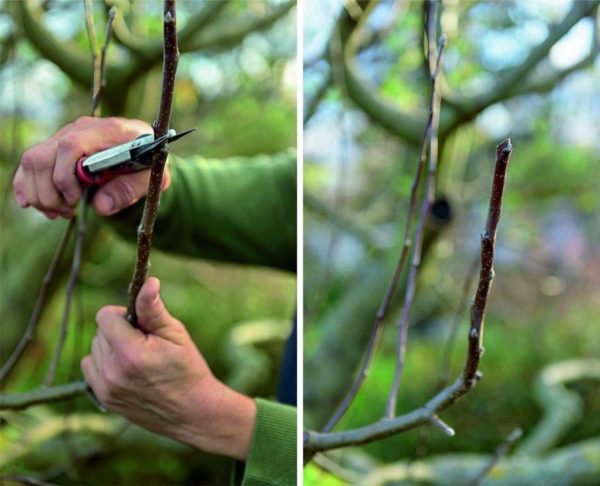
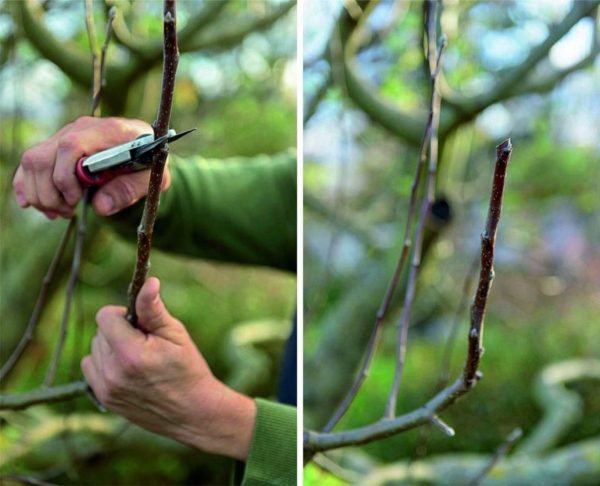
Cut off the top of the branch to the bud you want
- The upper part of the crown should be directed to the side (buds and shoots).
- Only the length that has grown over the last season is subjected to shortening. This should be done annually or every 2 years.


Scheme for shortening and thinning bushes
Thinning
This is a complete elimination of the branch. This method is used in order to prevent thickening of the crown of the bush, the appearance of pests in it and the development of diseases. And here there are some subtleties:
- The branch must be cut “into a ring” so that no hemp remains. Even a small (up to 1 cm) stump can be dangerous (gateway for pathogenic organisms).
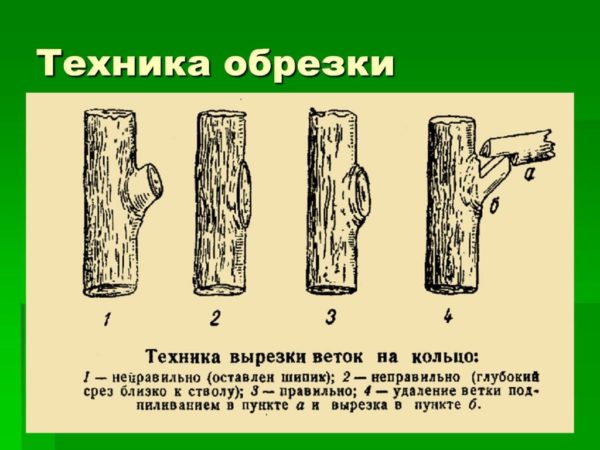
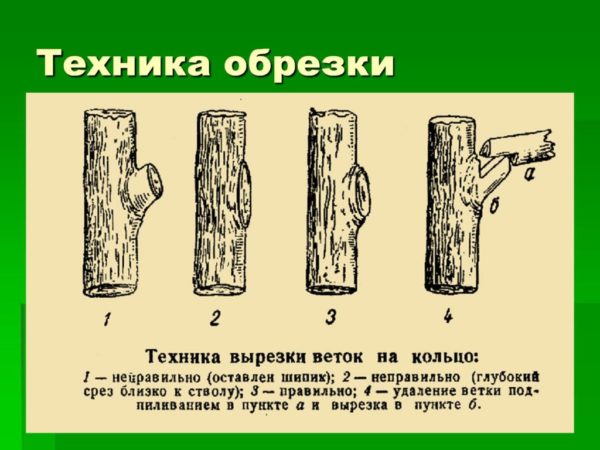
Ring trimming: true and false
- When choosing between removing two small branches or one thick branch, opt for the large one.
- Do not remove more than one branch directly from the trunk in an entire season.
What are the pruning schemes
There are several main types of pruning of horticultural crops – formative, regulating, rejuvenating, restorative. Pruning is also carried out in case of detection of diseases, freezing of branches. The main task of pruning shrubs, regardless of its types, is to increase productivity or decorativeness, to maintain horticultural crops in a healthy state.
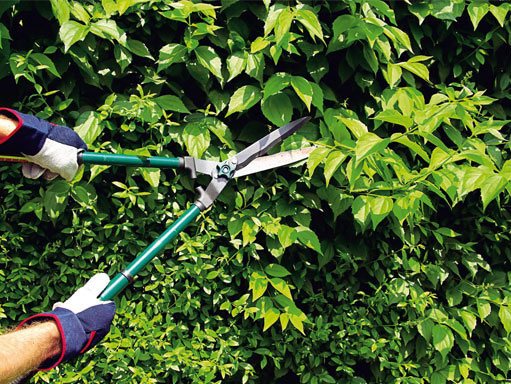
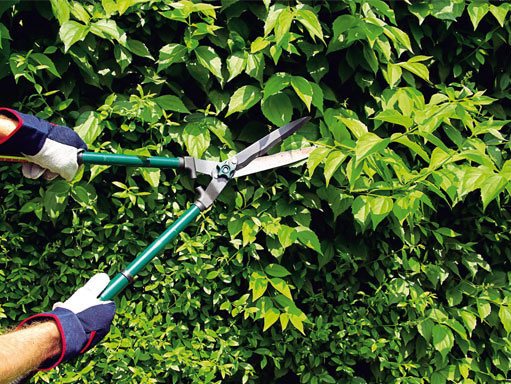
Sanitary pruning is a simple undertaking. Sanitary pruning is being carried out in order to make the trees healthier. It does not require a lot of knowledge or experience to carry it out. When carrying out sanitary pruning, it is necessary to remove dried, damaged, incorrectly located branches – which intersect or form an angle. When carrying out sanitary pruning, shoots that interfere with the leader and skeletal branches are also removed.
Supportive pruning is essential to keep the plants from growing vigorously. Pruning trees and shrubs of this type is relevant for fast-growing crops. It is necessary to remove old and non-flowering branches to rejuvenate the plants. Other types of pruning will require certain skills and knowledge.
Formative or structural pruning is done to create a beautiful and durable crown. You need to think about what you want to get in the end – tiered leader, leaderless, weeping, and so on. Pinching of non-lignified tops is carried out to restrain unnecessary shoot growth during the period of slowing down of their growth.
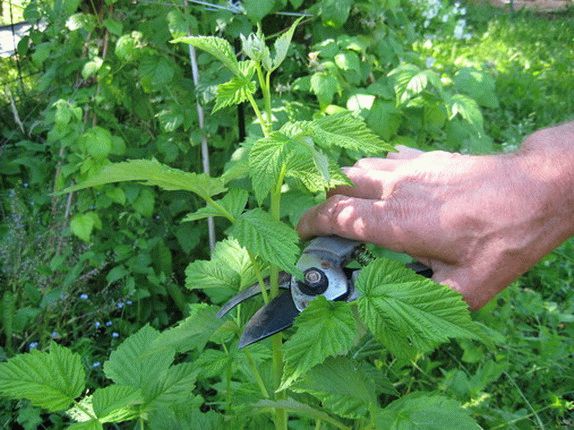

Continuous pruning or shearing is carried out without taking into account individual branches, you need to cut off the tops. Cutting is carried out with garden shears or a trimmer to give the plant the intended shape. This creates a dense surface for beautiful hedges. The technique is used in topiary art, and to remove no longer flowering shoots. The solid image is less common than other species, helps to care for berry bushes and dwarf shrubs. Cut to 1/3 of the annual growth, resulting in decorative green pillows.
Among the types of pruning, rejuvenating or restorative is distinguished. It activates the growth of crops by the emergence of new shoots, correction of crown defects, and treatment of damage. In the course of carrying out, thick branches are also removed. They leave the base and skeletal branches on which buds appear and later new shoots form. Among all types of pruning, this one is carried out for an adult garden. Correct pruning of fruit shrubs will help to improve crops, make them beautiful and get a high yield.
Figured pruning of shrubs
Aesthetics play an important role in the design of the garden. What can help you achieve it? Various landscape decorations, such as an alpine slide, arenarium, pond, figurines, etc. But, perhaps, one of the best ways to give the garden a well-groomed look is topiary.
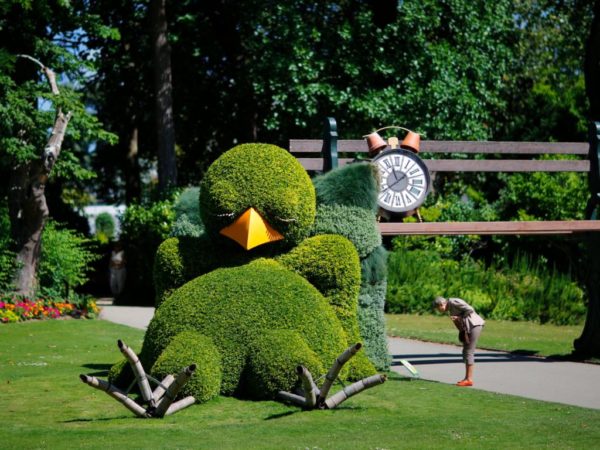
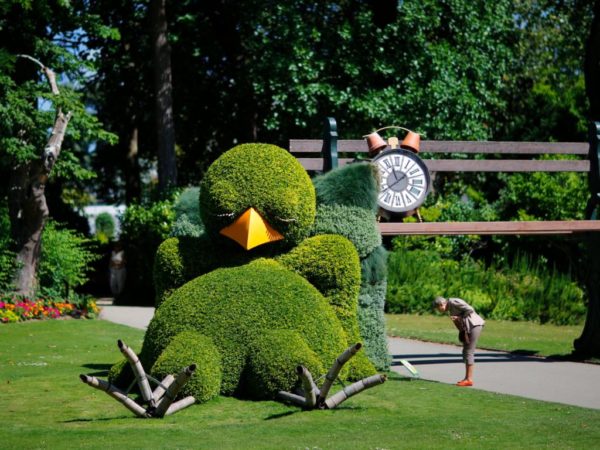
Topiary – curly pruning of bushes, the real art of creating beautiful “sculptures” based on a bush plant
As a rule, evergreen and small-leaved bushes are cut in this way, because they will keep their shape best of all and delight the eyes for a long time. Perhaps, independently, without certain skills, it will be problematic to create a green lion or giraffe from your garden bush. However, you are quite capable of giving the bushes different geometric shapes. To do this, you need to know some topiary rules regarding a particular figure.
Cone
The most common among garden “hairdressers”. It’s all about the relative simplicity of its creation and further maintenance. The haircut is carried out from top to bottom using long straight poles (4-6 pieces) or a special shape.
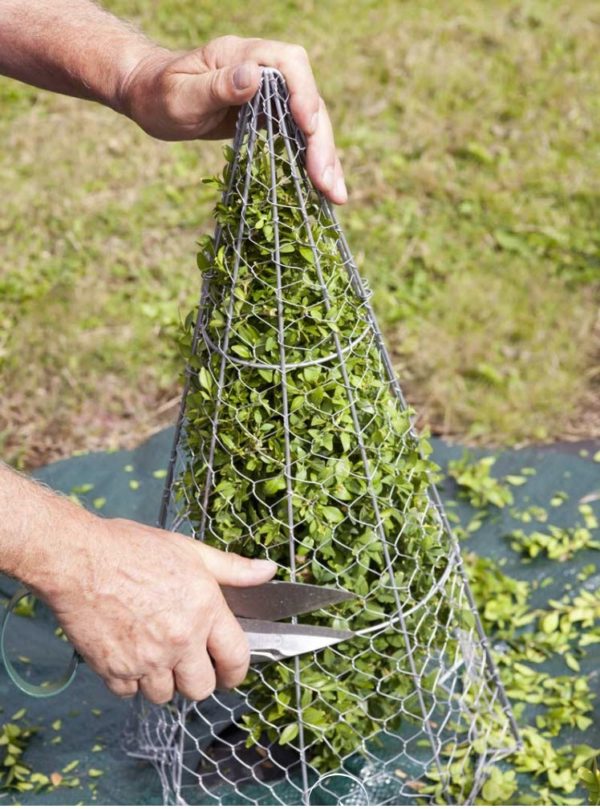
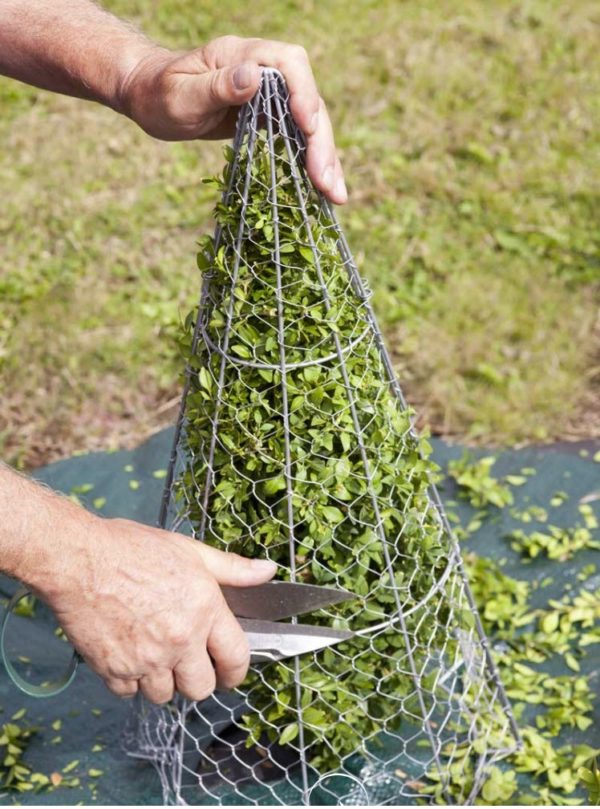
The shape is set around the bush in the form of a pyramid.
Branches that go beyond the contour of such a pyramid are removed. The shape of the cone will look good on juniper bushes, barberries, western thuja, Canadian spruce.
Ball
A very effective figure, but quite time consuming.
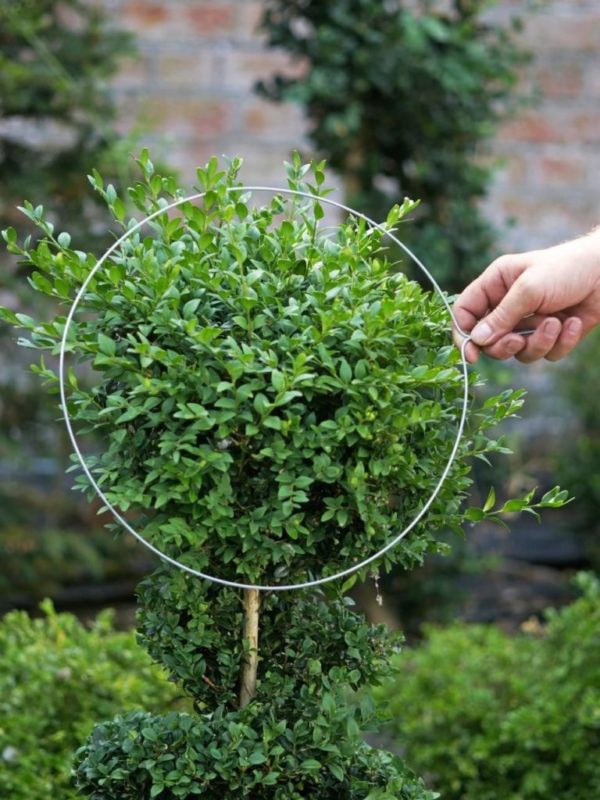

To simplify the process, make a template from the wire – a ring
Attach a handle to it for convenience. The main thing is that the width of the ring does not exceed the width of the bush. When you decide to start trimming, simply place the template on the bush and trim off any sticking out branches. The easiest way is to work with those plants that have a spherical crown by nature: then you only need to maintain it periodically. Good balls are obtained from gooseberries, laurel.
Important: when creating this or that figure, take into account the natural shape of the crown of the bush.
Cube
Before you start cutting, draw a square around the shrub and build a cube rack around it. Remove the sticking out branches. You need to start from the top side, and end with the side ones. Trim the crown. At the end, remove all protruding hemp with a pruner. A cubic shape can be given to spruce thorns, cotoneaster, hawthorn.


The cube is a simple and beautiful shape
Spiral
The effectiveness of such a figure is difficult to overestimate, but in execution it is not so simple and will require care and patience. Apply a spiral shape to those bushes that are naturally conical.
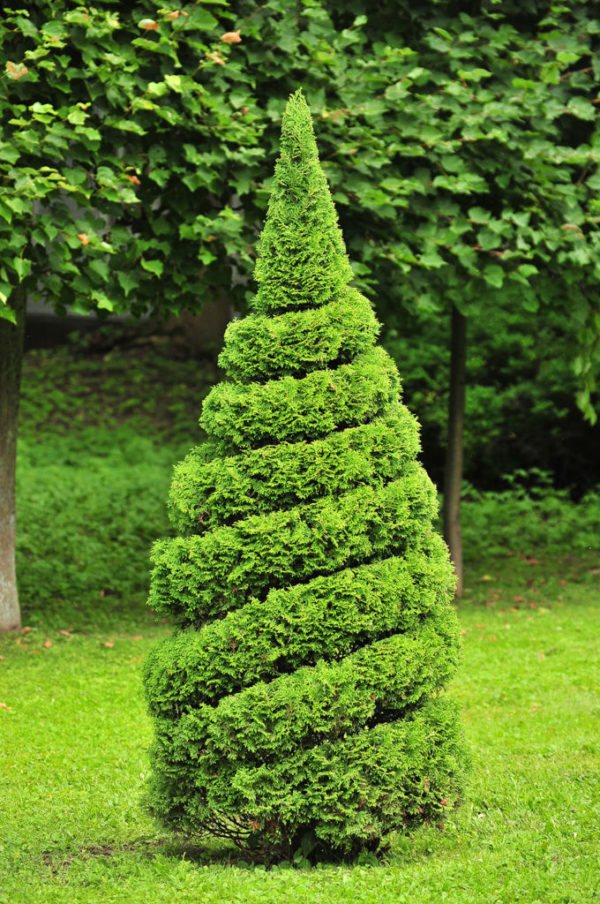
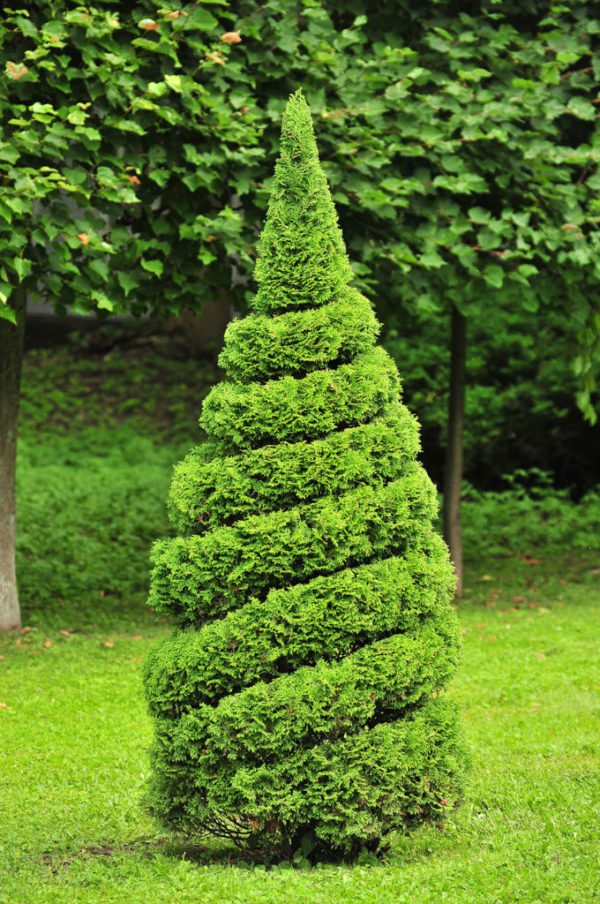
The spiral is a spectacular but time-consuming form
The way to create a spiral is as follows: wrap a simple ribbon around the bush from top to bottom. The sections near the ribbon, located between the turns, are sheared and deepened the haircut until a spiral is obtained. This requires pruning shears and garden shears. The method is not easy and requires great care and patience: it takes several seasons for full formation. An ideal shrub for a spiral is thuja western “smaragd”.
Video – Creating a topiary from western thuja
Forming pruning
In the autumn, this procedure is carried out only for shrubs that bloom in summer. If you cut off the plants blooming in spring, their decorative effect will significantly deteriorate, since flowers are formed on the shoots of the last year. With the help of molding pruning of shrubs, ordinary plants are turned into decorative ones, for which several shoots with high growth vigor are added to the key branches every year.
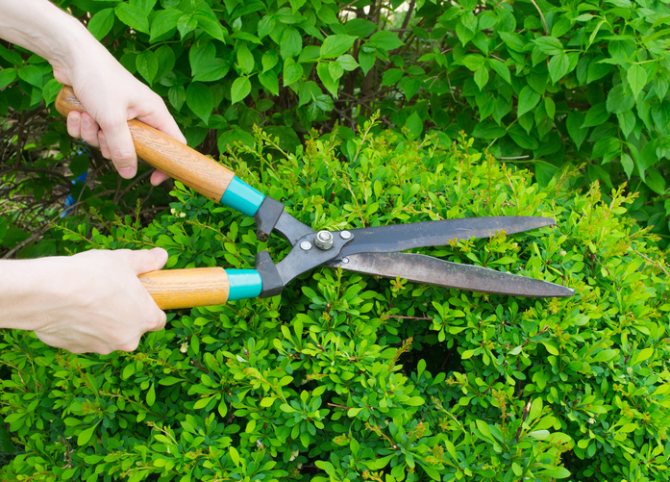
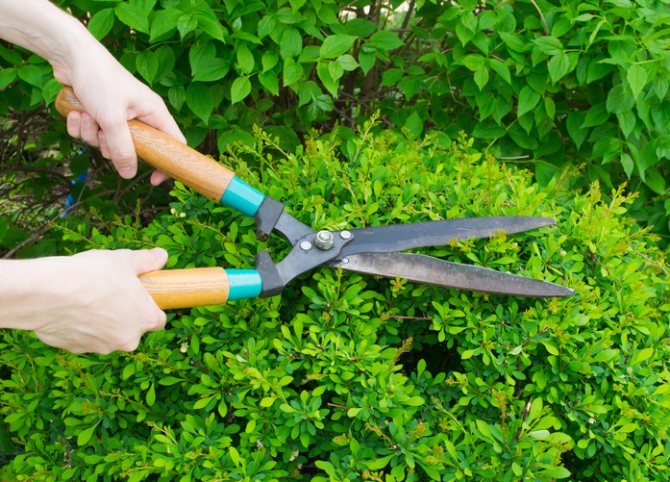
In some shrubs, root shoots grow quickly, which increases their width too much, so during formation it is necessary to remove shoots around the perimeter. But you should not be too zealous, as this can affect the density of the plant crown, it will become loose and unsightly. First of all, remove the weak branches coming from the roots. It is also allowed to cut off strong shoots directed inside the bush, interfering with nearby strong growing branches. It would be most correct to leave those shoots that in the future will replace sick or old ones.
In shrubs with poor winter hardiness, the formation of dry branches is a frequent occurrence. They should be removed during trimming. The cut should be done above the level of the second from the base of the kidney. If individual branches have died and spoil the decorative effect of the bush, you need to get rid of them. During wintering, the upper shoots may freeze slightly, although the frost has not affected the lodging branches. In this case, they just need to be tied up and left.
Hedge trimming
Often, gardeners let the growth of these beautiful plants take their course, starting to think about pruning them only after a few seasons. However, the type of hedge will depend on how you form it at the initial stage (the first year after planting). If the shoots are not removed at the very beginning of growth, they will begin to stretch upward, and the hedge below will be bare. To prevent this situation and provide an excellent view of the plant structure, you need:
- shortly after planting, stimulate the growth of young root cuttings, for this, cut off all the shoots, leaving a maximum of 15 cm above the soil;
- repeat the procedure in the second year;
- for the third (and subsequent) years, carry out cosmetic pruning.
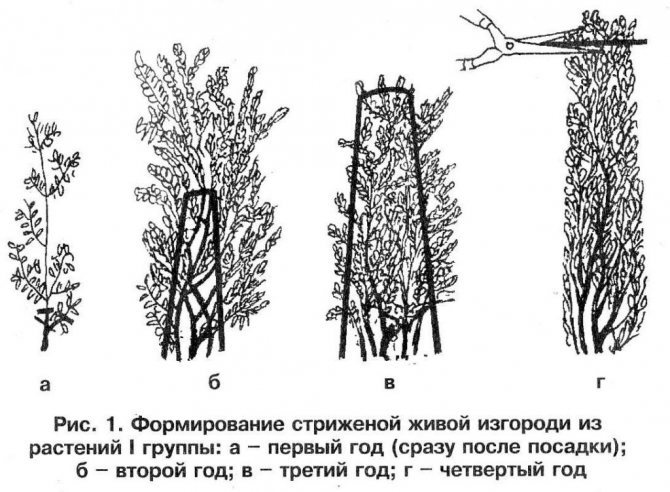
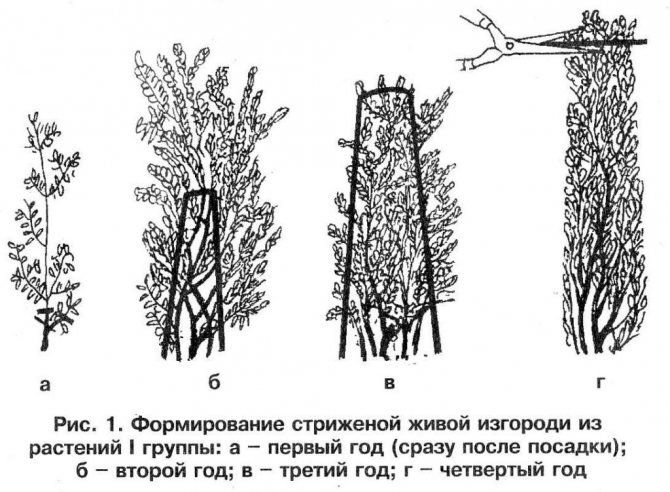
Scheme of the formation of a bush for a hedge
Important: the frequency of hedge trimming will depend on the crop.
Best time to trim
When is the best time to prune trees, in the fall or spring, depends on many factors. In the spring it is preferable to do this, since during these months the tree only wakes up, and the wounds will heal faster.
Important! Pear, cherry, plum after pruning in the fall can become completely ill. Also, young seedlings should not be cut at this time.
If broken branches suddenly appeared after bad weather, they should be removed immediately, regardless of the season. One contraindication for this can be an air temperature of -5 degrees and below.
Top dressing after pruning
Regardless of the season in which the procedure for removing branches and shoots was carried out, at the end of it, it is imperative to feed the plant, because it will need additional nutrition. The main substances required at this time for shrubs:
- Potassium and nitrogen. The easiest way is to purchase special fertilizers in a garden store; you can prepare them yourself. To do this, mix 3 tablespoons of potassium nitrate with 10 liters of water. Water the bush with this solution.
Attention: watering with a solution with useful substances is carried out at the root! Make sure that it does not hit the leaves and branches.
- Nitrophoska, urea and ash. All ingredients (30: 30: 100) are mixed with water (1 bucket).
- Phosphorus. Shrubs are fertilized with this substance after pruning in August-September, since it is during this period that the root system is actively formed. For top dressing, sprinkle the fertilizer on the near-trunk circle of the shrub and water it.
- Compost (infusion). 500 gr. Mix organic matter with 10 liters of water and let it brew for 3 days. Water the trimmed plants in the evening after sunset.
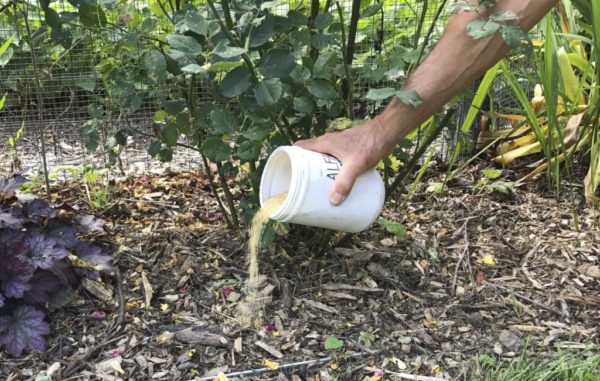
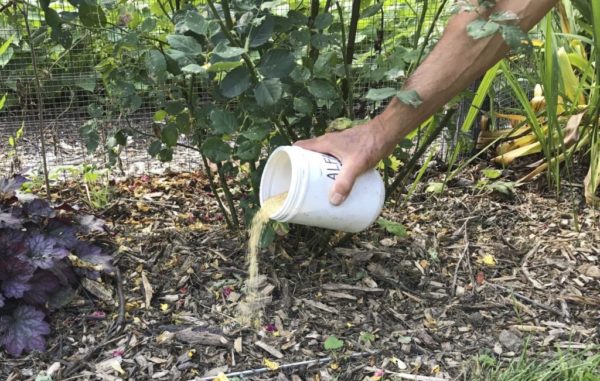
Fertilizers need to be applied when the sun is no longer active, but better – on cloudy days
Long-handled pruner (lopper)
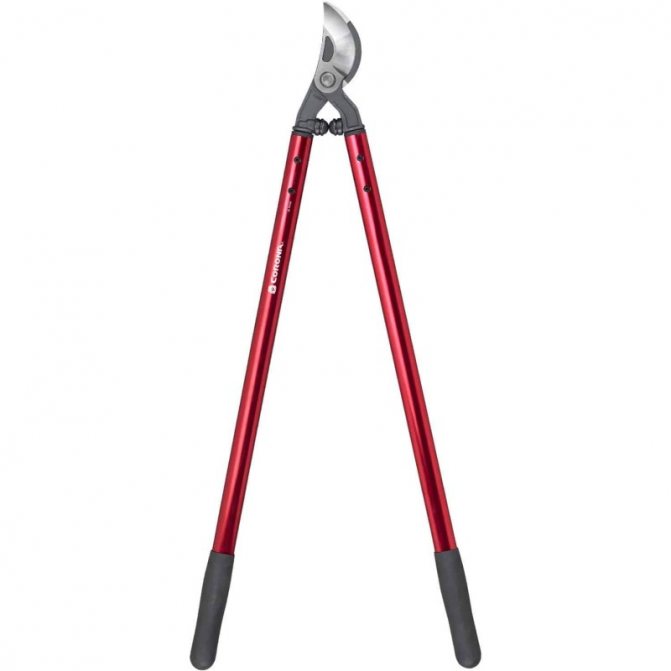

The main differences between the pruner and the conventional pruner are the long handles and a special design that allows you to increase the force for cutting thick branches. Pruners with long arms are most often used to form the crown of a tall, dense tree. Loppers can be double-arm, double-edged (telescopic), with anvil.
To form high crowns, pole cutters are used (rod loppers).
After pruning, the place where the sawn branch grew must be treated with a special mixture so that fungi and bacteria do not get into it.
Do not neglect the autumn pruning of branches, carry it out with a high-quality tool suitable for its intended purpose. The garden will surely answer you for it with gratitude.
Shrub pruning: mistakes
It only at first glance seems that cutting off an extra branch is a simple matter. However, gardeners often make many mistakes when pruning crops. Let’s consider the most common ones, perhaps this will help you avoid repeating them:
- Unsuitable tool. Some summer residents do not pay enough attention to what they work with and cut down large (2 cm or more) branches. Sometimes completely unsuitable hacksaws are used for this.
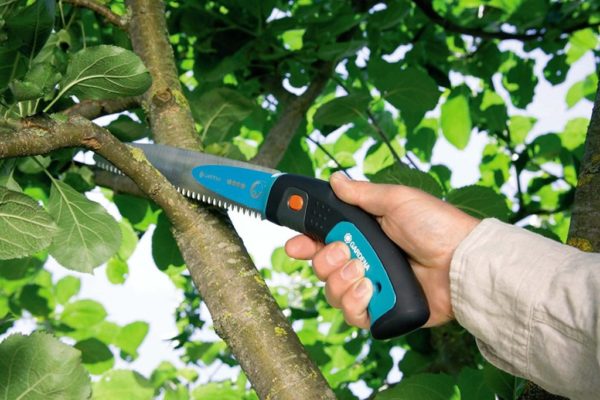
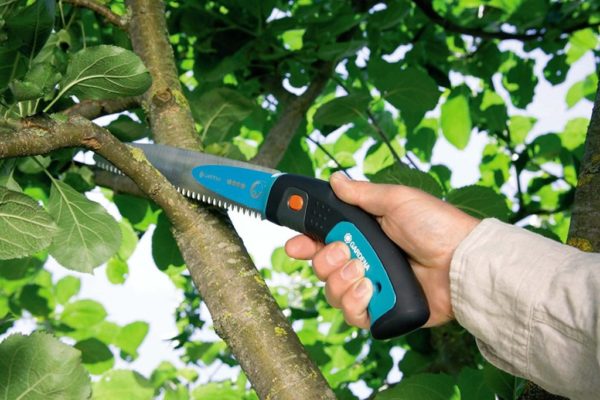
Choose special tools for the job
- Incorrect cut processing. The place of the saw cut must not only be corrected with a sharp knife, but also processed with garden pitch (a layer of 3-4 mm). Otherwise, mushroom spores and a hollow will form at the cut site.
- Failure to follow the rules of the trimming order. First, cut off most of the branch, leaving 30-40 cm from the base, and then carefully saw off the rest.
- Incorrect cutting location. There is usually a slight “influx” at the point where one branch passes into another. You need to cut the branch exactly along its edge. No more, no less.


Branch cut-off scheme with a “flow”: right and wrong
- Inappropriate time and purpose of the haircut. Before you start pruning, look at the bush carefully: what needs to be done? To carry out sanitary measures, to form a crown, or to rejuvenate a culture? Perhaps the plant needs several types of pruning at once. In any case, before removing branches, decide on the type of bush, goals and timing of pruning.
Garden shrubs, flowering or deciduous, are wonderful plants that can become a highlight of any site and even an element of its landscape design. But in order for the bush to look neat and grow well, do not forget not only about watering and fertilizing, but also about a haircut. Correctly and timely pruning of the culture is the key to its beauty, lush flowering and active growth. Make no mistakes, watch out for the green “inhabitants” of the garden, and they will delight you for a long time.
What is the difference between a lopper and a pruner

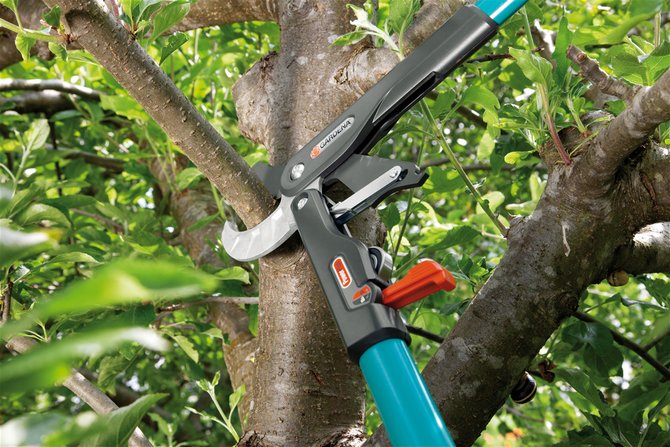
Below are the distinctive characteristics of these two tools:
- The lopper trims branches in hard-to-reach places. You can trim branches that are too large without using a ladder.
- Most loppers are equipped with handles that can be extended up to several meters.
- The lopper is able to remove material thicker than 5 cm.
- When working with the pruner, only one hand is involved.
When choosing a lopper, it is important to understand that it contains all the positive sides of the pruner, and these two tools differ only in the length of the handles. Loppers can also be bypass and with anvil, with or without ratchet. In most cases, a well-groomed garden area does not require such a tool as a lopper, sun. work can be done efficiently and with pruning shears.
Features of primary and subsequent pruning
A free-growing plantation does not need to be artificially modified. Formed fencing needs to be trimmed. Both those and other types of hedges require care at first after planting.
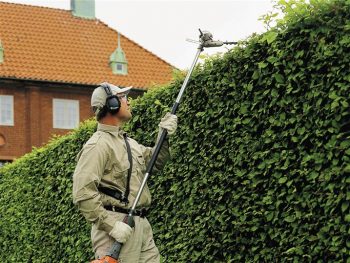
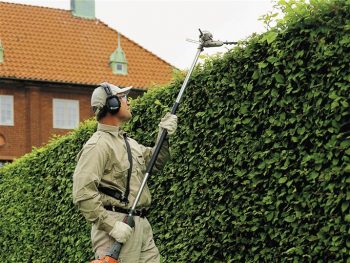
This light pruning is necessary to increase the density of the branches.
Primary pruning. The quality of rooting of the plant, the appearance of the planting in the future depends on it. Cutting starts the intensive growth of young shoots, stimulates the development of the root apparatus. The table below provides information on primary pruning.
| Plants | Trimming time | Trim volume | |
| Crohn, cm | Lateral shoots, cm | ||
| Deciduous (deciduous) | for plants planted in autumn – spring; for planted in spring / summer – after disembarkation | 30 – 35 above the ground | 15 |
| Coniferous | July – early August, after 12 months. after landing | tops 10 – 18 | to 10 |
When the planting has grown. The formed deciduous fence, which has reached the desired size, is pruned frequently (almost monthly). It is useful to thin out the crown – once / several years, in the spring before the buds appear.
Old, thickened branches are eliminated, and young ones are shortened by two-thirds of their length. A formed fence of conifers is cut at least 2 times / year, but less often for some plant species.
Pruning anti-aging
It is carried out on mature shrubs so that their flowering is more lush. Anti-aging pruning is also done on plants with an annual growth of less than seven centimeters. This procedure consists in shortening old branches. After it, dormant and adventitious kidneys activate their growth. The timing of pruning shrubs is extended in time. This can be done from the last month of winter to April, as well as in August and September.
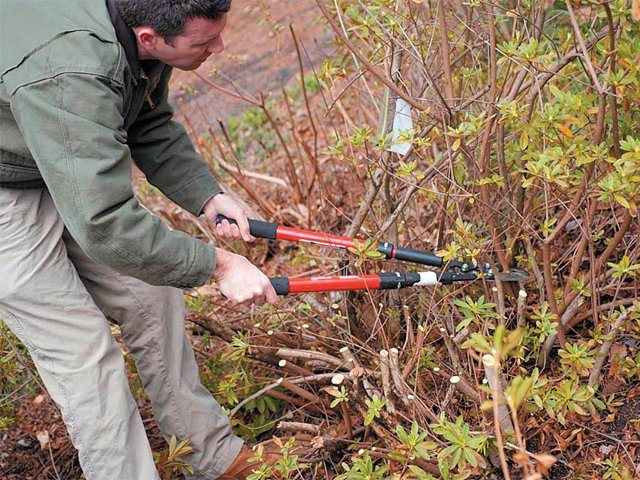

The rejuvenating procedure consists in cutting off the branches by 30% from the very top after the end of the flowering period. To make it even more abundant, remove one, the oldest branch in the bush. Shrubs should be rejuvenated once every two years.
Decorative Shrubs
They are grown for use in landscaping. Ornamental shrubs are pruned to make them look attractive. The first procedure is carried out during the planting period, in the spring. Shoots of young seedlings are shortened by 10-15 cm. Three to five buds are left on each. New shoots will grow from them during the first year. During the autumn pruning of shrubs, they get rid of broken, diseased, dry and lying on the ground shoots. If during the first year the growth of the shrub was weak, all shoots are cut off at a level of three to five centimeters above the ground.
In the second year of life, the shrub forms powerful branches in the amount of several pieces. In the fall, it is necessary to carry out sanitary pruning. The cut must be done at the very base. If necessary, this pruning is repeated in spring. But it should be carried out until the kidneys swell and the juice begins to move.

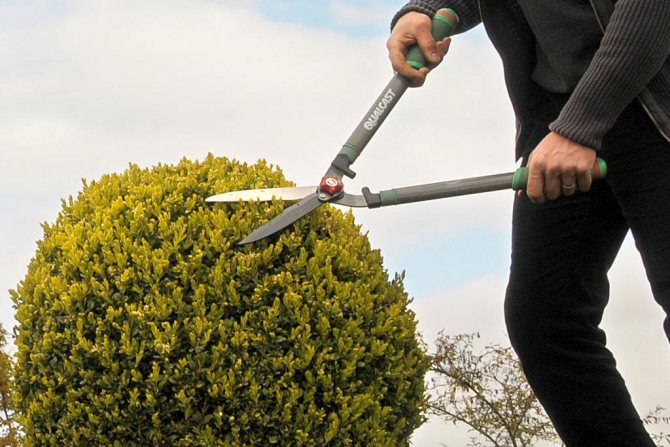
In the future, when pruning, it should be remembered that only during the first year of life, the branches grow rapidly, then their growth rate decreases, and by the age of five to six years of life, it stops altogether. The formation of the crown of shrubs ends in the fourth or fifth year after planting.


